
NUMBER97 / VOLUME23 / NUMBER4 THECENTERFORPHOTOGRAPHY AT WOODSTOCK . ,- &!~•• t PQ A JOURNALFORCONTEMPORARYPHOTOGRAPHY (
POSTAFF EDITORIALINTERN PO DESIGN
CPWSTAFF.EXECUTIVEDIRECTOR
CPWSTAFF.EDUCATIONCOORDINATOR
CPWSTAFF.PROGRAMASSOCIATE
CPWSTAFF.OPERATIONSMANAGER
CPWSTAFF.DIGITALLAB MANAGER
CPWSTAFF.ARTSADMINISTRATIONINTERN
CPWSTAFF.ARTSADMINISTRATIONINTERN
CPWSTAFF.ARTSADMINISTRATIONINTERN
CPWSTAFF.ARTSADMINISTRATIONINTERN
CPWDIRECTOREMERITA
CPWBOARDOF DIRECTORS
CPWBOARDOF DIRECTORS
CPWBOARDOF DIRECTORS
CPWBOARDOF DIRECTORS
CPWBOARDOF DIRECTORS
CPWBOARDOF DIRECTORS
CPWBOARDOF DIRECTORS
CPWBOARDOF DIRECTORS
CPWBOARDOF DIRECTORS
CPWBOARDOF DIRECTORS
CPWADVISORYBOARD
CPWADVISORYBOARD
CPWADVISORYBOARD
CPWADVISORYBOARD
CPWADVISORYBOARD
CPWADVISORYBOARD
CPWADVISORYBOARD
CPWADVISORYBOARD
CPWADVISORYBOARD
CPWADVISORYBOARD
CPWADVISORYBOARD
CPWADVISORYBOARD
CPWADVISORYBOARD
CPWADVISORYBOARD
CPWADVISORYBOARD
CPWADVISORYBOARD
CPWADVISORYBOARD
CPWADVISORYBOARD
CPWADVISORYBOARD
CPWADVISORYBOARD
CPWADVISORYBOARD
CPWADVISORYBOARD
CPWADVISORYBOARD
CPWADVISORYBOARD
CPWADVISORYBOARD
ARIELSHANBERG
MEGANFLAHERTY
LIZ UNTERMAN
LARRYLEWIS
AMY COLES
JOSEPHINEKENNEY
AMY MEYER
KENDRASCHRIMER
de.MO
ARIELSHANBERG
LIZ UNTERMAN
MEGANFLAHERTY
LARRYLEWIS
PHIL MANSFIELD
AMY COLES
JOSEPHINEKENNEY
AMY MEYER
KENDRASCHRIMER
COLLEENKENYON
W.M. HUNT
ARIE KOPELMAN
DAVIDMALONEY
KITTYMCCULLOUGH
DOUGMENUEZ
ROGERRICCO
NINA SCHULTZTERNER
ARIELSHANBERG
GERALDSLOTA
BOBWAGNER
KOAN-JEFFBAYSA
PHILIPCAVANAUGH
DARRENCHING
BRIANPAULCLAMP
DANIELCOONEY
JULIE GALANT
HOWARDGREENBERG - FOUNDER
WILLIAMHANNIGAN
DOUGJAMES
DAVIDKARP
ELLENK. LEVY
SARAHHASTEDMANN
YOSSIMILO
JEFFREYMILSTEIN
SARAHMORTHLAND
GLORIANIMETZ
ALISONNORDSTROM
ROBERTPEACOCK
LILO RAYMOND
MIRIAMROMAIS
ERNESTINERUBEN
KATHLEENRUIZ
NEILTRAGER
JUDY UPJOHN
RICKWESTER
THISPUBLICATION IS MADEPOSSIBLEIN PARTWITHGENEROUSSUPPORT FROMSUBSCRIBERS,PO ADVERTISERS,INDIVIDUALS,CPW MEMBERS, THEANDYWARHOLFOUNDATIONFORTHEVISUALARTS,& WITHPUBLIC FUNDSFROMTHE NEW YORKSTATECOUNCILON THE ARTS,A STATE AGENCY.PHOTOGRAPHYQUARTERLY IS DEDICATEDTOFEATURINGCONTEMPORARYIDEASANDIMAGESWITHINTHECONTEXTOFCONTEMPORARY PHOTOGRAPHYAND RELATEDMEDIA THROUGHPORTFOLIOFEATURES, ESSAYS,INTERVIEWS,BOOKREVIEWS,AND MORE,PHOTOGRAPHYQUARTERLYIDENTIFIESTHE MOSTCOMPELLINGVOICESIN THE FIELDAND EXPLORESRELEVANTSUBJECTMATTERTO OURTIMESTHROUGHTHE PRISMOF PHOTOGRAPHYAND RELATEDMEDIA IT IS INDEPENDENTLY PUBLISHEDFOURTIMESA YEARBY THECENTERFORPHOTOGRAPHY AT WOODSTOCK.FOUNDEDIN 1977, THE CENTERFOR PHOTOGRAPHY AT WOODSTOCK IS A NOT-FOR-PROFIT501(C)3 ARTIST-CENTEREDORGANIZATIONDEDICATEDTOSUPPORTINGARTISTSWORKINGIN PHOTOGRAPHY ANDRELATEDMEDIAANDENGAGINGAUDIENCESTHROUGHOPPORTUNITIES IN WHICHCREATION,DISCOVERY,AND EDUCATIONAREMADEPOSSIBLE. CPWENGAGESPHOTOGRAPHERSANDTHEIRAUDIENCESTHROUGHYEARROUNDPROGRAMSOFFERINGSIN EDUCATION,EXHIBITION,RESIDENCY, PUBLICATION,FELLOWSHIP,INTERNSHIPS,AND SERVICESFORARTISTS. PHOTOGRAPHYQUARTERLY IS PRINTEDBY NEWYORKPRESS& GRAPHICS ALBANY,NYANDDISTRIBUTEDBY UBIQUITYDISTRIBUTORS,BROOKLYN,NY. PHOTOGRAPHYQUARTERLY#97, VOL23, NO.4 ISSN08904639.COPYRIGHT ©2008. CENTERFORPHOTOGRAPHY AT WOODSTOCK 59 TINKERSTREET WOODSTOCK NY 12498.TEXT& IMAGES©2008 JOANBARKER,DEBORAH BAY,JULIANCOX,FRANDICKSON,ISAACDIGGS,JOHNDUGDALE,HELEN HOFFELT,JOSEPHINEKENNEY,ISABELLELUMPKIN,J. BRAD MOORE, LAURANOEL,JAANIKAPEERNA,ROBPENNER,DONNAPINCKLEY,WARD ROE,SAM SEBREN,ARIEL SHANBERG,XAVIERASIMMONS,KWABENA SLAUGHTER,JULIANNESWARTZ,KATHLEENSWEENEY,VAGNERWHITEHEAD, SUSANWIDES,BETHE. WILSON,ION ZUPCU.ALL PHOTOGRAPHSAND TEXTSREPRODUCED IN PHOTOGRAPHYQUARTERLYARECOPYRIGHTED BY THEARTISTSAND WRITERS.ALL RIGHTSRESERVED.NO PARTOF THIS PUBLICATIONMAYBE REPRODUCEDORTRANSMITTED IN ANY FORMOR BY ANYMEANS,ELECTRONICORMECHANICAL,WITHOUTWRITTENPERMISSIONFROMTHE CENTERFOR PHOTOGRAPHY.THE OPINIONSAND IDEASEXPRESSEDIN THISPUBLICATIONDO NOTREPRESENTOFFICIAL POSITIONSOF CPW.
SUBSCRIBETORECEIVEPHOTOGRAPHYQUARTERLYFOURTIMESA YEAR USA$25 / CANADA& MEXICO$40 / INTERNATIONAL$45. PLEASEMAKE CHECKSPAYABLETOCPW.MC/ VISA/ AMEXACCEPTED.

THECENTERFORPHOTOGRAPHY AT WOODSTOCK 59 TINKERSTREET,WOODSTOCK,NY, 12498
T 845 679 9957 F 845 679 6337 INFO@CPW.ORG
WWW.CPW.ORG
S...lllh THEANDYWARHOL NYSCA FOUNDATIONFORTHEVISUALARTS
Introduction

<.i:i
Welcome dear readers to the 97th issue of the Center for Photography at Woodstock's publication, PQ. Along with being a prime number, this issue marks our first collaboration with Giorgio Baravalleand his design team at de.MO. After the engaging and insightful discussion PQ's Liz Unterman had with Baravalle in PQ#96, we just couldn't stop wondering what the forward thinking de.MO could do with our own publication. So here it is, in your hands, our first issue to be designed bY.the great team at de.MO - our thanks to them for giving PQ an exciting new look that brings the amazing images and engaging ideas featured in the following pages to you in a bold new fashion.
With this issue of PQ, CPW celebrates the second installment of our Regional Triennial of the Photographic Arts. Introduced in 2005, the Triennial was established to examine the wealth of photographic talent found in the greater Hudson Valley/Catskill Region. For this, the second incarnation of the Triennial, CPWinvited art historian and curator, Beth E. Wilson to highlight the most compelling image-makers living and working in our neck of the woods and lend her take on what ideas are driving photographic inquiry today. Little did we expect to be told it is all a big lie! Well, once the shock settled we found ourselves deeply moved by the ideas explored through her essay and the enlightening dialogue held with the artists whose works were featured in the 2008 triennial. In the end, we think you'll find Wilson's words along with the works and ideas of the 2008 Triennial artists, truthfully illuminate the ways in which artistic truth and inquiry both collide with and open up the world around and within us.
Back in 2007 we invited the renowned curator of photography at the High Museum of Art in Atlanta, Georgia, Julian Cox to select six of the most exciting portfolios submitted for our annual PHOTOGRAPHYNOW offering. Without pause, Cox delivered on that request and with this issue we are excited to help bring to light six image-makers from across the United States whose work exemplifies the wide range of inquiries photographers are making today, whether they be driven by personal narrative, social and cultural shifts, or the world around them.
Additionally we are pleased to introduce you to work produced by six outstanding artists who participated in our 2006 Artists-in-Residence program, WOODSTOCKA-1-R.Many of the projects featured in these pages were born out of the time they spent here in Woodstock, a truly humbling experience for those of us who were witness to and assisted in their creative process!
So we hope you'll enjoy the dynamic range of perspectives that fill the pages before you and look forward to hearing your thoughts on all that is explored in PQ#97.
Yours,
Ariel Shanberg PQ Editor
c::, c::, "'
f I f (
l\J rl~~l\J rl~
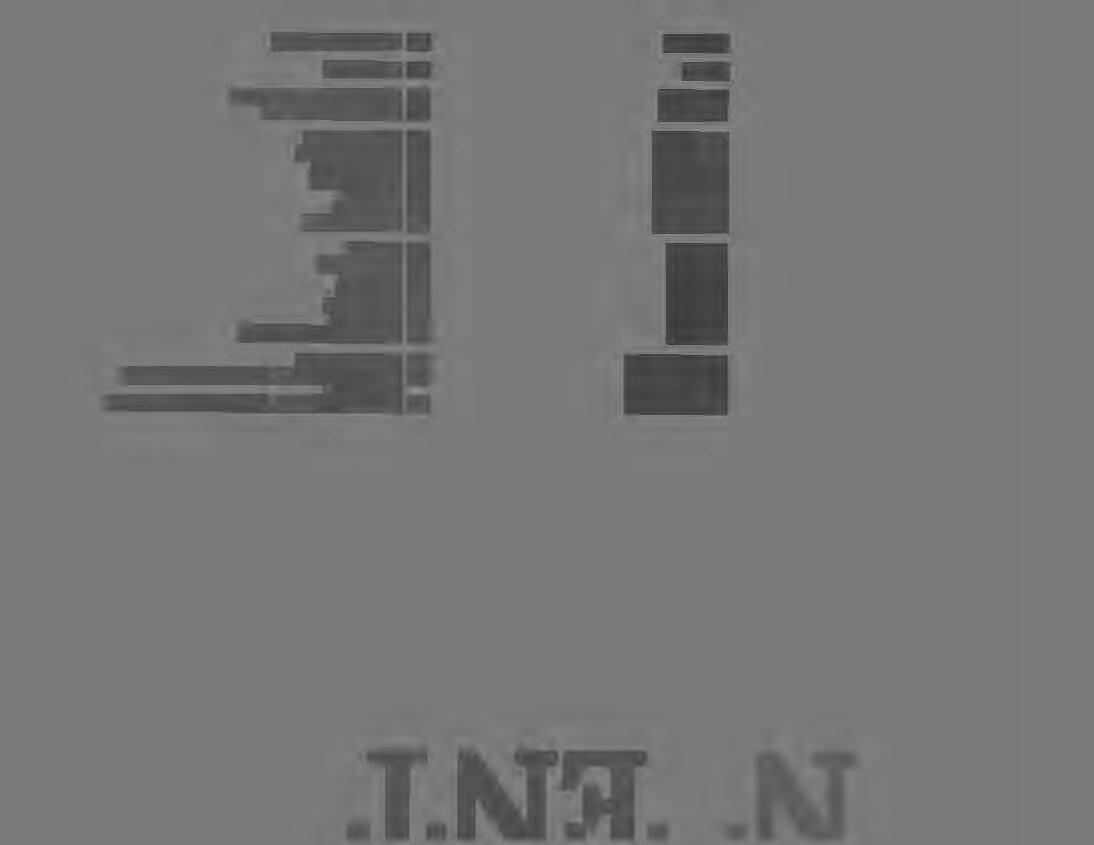
REGIONALTRIENNIAL
006 THECAMERAALWAYSLIES: THECPWREGIONALPHOTOGRAPHIC
REGIONALTRIENNIAL TRIENNIAL2008
REGIONALTRIENNIAL 016 THECAMERAALWAYSLIES: A PHOTOGRAPHERS'DISCUSSION
REGIONALTRIENNIAL 020 ARTIST'SBIOGRAPHIES
PHOTONOW 022 PHOTOGRAPHYNOWINTRODUCTION
PHOTONOW 024 FRANDICKSON
PHOTONOW 026 HELENHOFFELT
PHOTONOW 028 BRADMOORE
PHOTONOW 030 LAURANOEL
PHOTONOW 032 DONNAPINCKLEY
PHOTONOW 034 WARDROE
A-1-R FEATURE 036 A-1-R INTRODUCTION
A-1-R FEATURE 038 DEBORAHBAY
A-1-R FEATURE 040 ISAACDIGGS
A-1-R FEATURE 042 ISABELLELUMPKIN
A-1-R FEATURE 044 XAVIERASIMMONS
A-1-R FEATURE 046 KWABENASLAUGHTER
A-1-R FEATURE 048 VAGNERWHITEHEAD
NOTEDBOOKS 050 THIRDVIEWS,SECONDSIGHTS
NOTEDBOOKS 051 RECENTADDITIONSTOCPWLIBRARY
LIGHT 052 JAKE ROWLAND CPWEVENTS 059 LISTOF EVENTSAND NEWS
IN

t f "" ( '"'t X N LL 0 U) -' w :z ct en U)' >:z a': Cl.. I:;:; :2 -' ::c: L) a:: <( U) U) Cl.. u =I > LL z Cl.. <( ::::; L LL 0 a::' ' a:: w ' :,:: >- a:: z <( <( co ·,,. ---,
The Camera Always Lies
by Beth E. Wilson

The Camera Always Lies takes as its starting point a contrary idea: that despite its apparent directness, photography (like all forms of representation) collapses reality in ways that inevitably shape our experience of the world as it is perceived through that mediumand beyond it, as well. Perhaps the verb 'lies' is a bit extreme. I will admit to using it in the title as something of a provocation, calling into question what might be considered the assumed role of photography as a producer of objective documents. This is not a question that has only recently arisen with the emergence of the digital format - from its very inception, the camera has functioned to make a picture of the world, which is something very different from the total (re)creation of one. A "mirror with a memory," the photographic image insinuates itself between us and the place and time in which it was made, a technology (and a displacement) that enables the wide array of strategies explored by the artists featured in this text.
While this selection focuses on artists working within New York's Hudson Valley/Catskill Region, it should immediately become clear that there is no longer such a thing as a purely regional set of photographic and/or aesthetic concerns. In some instances, the photographers are working with subjects that directly relate to the area and/or its history, in others they turn the lens on phenomena that are far from home. Given today's extremely efficient, globalized networks of information and transportation, it would be futile to attempt to identify a particular Hudson Valley/CatskillRegion aesthetic issue, or (in the archaic sense) a stylistic school within the region. Despite the wide variety of aesthetics and approaches included in the show, however, all of the artists selected for CPW'ssecond installment of its Regional Triennial are united in the sense that nothing seen here is as it initially appears.
The works gathered for The Camera Always Lies are divided into four categories; Abstraction, The New Romantics, The Anti-Romantics, and The Attractions of Cinema, which are designed to recognize and to advance a conversation between the works featured and the selected artists on themes that reflect various aspects of the larger concept. In some cases the same artists and/or bodies of work blur the boundaries of these prescribed themes, further emphasizing the elusiveness of established borders and boundaries within contemporary practices. The work in the Abstraction section presses the limits of the medium in departing from the often-assumed literalness of photographic representation, by pursuing seem-
006 SEC 001
,.. : 0 0 N ---4

007 REGIONALTRIENNIAL

ingly pure, Platonic form. The New Romantics engage projections of desire and fantasy, tapping into the intertwined appeals of history and beauty; the Anti-Romantics expose the flip-side of the coin, puncturing the consumer/commodity bubble that relies so heavily on photography for its persuasiveness. And finally, The Attractions of Cinema, addresses the intersections of time, place, and perspective, with works that bear various conceptual relationships to the moving image.
ABSTRACTION
How is it possible for a photograph or a video - normally understood as a direct transcription oflight as it bounces from (or is occluded by) a particular object to render something like a 'pure' abstraction? And in a related question, what becomes of reality when we focus on it in such an aestheticized manner? In the work of both Ion Zupcu andJaanika Peerna, we're no longer quite sure what it is that we're looking at as familiar objects and subjects are transformed per radical cropping and/or shift in scale. As a result, the image becomes most fully a new sort of entity, with a life of its own, radically reconstructed as art.
008 SEC 001
N N X

Ion Zupcu has found a path into that philosophical thicket. Part Bauhaus-inspired Vorkurs study, part virtuoso improvisation with the purest ingredients of photography, Zupcu's work dynamically transforms tiny bjts of cut and folded paper (and more recently, small wooden cubes) into expressive objects in their own right. None of his 'models' are larger than an inch in any dimension; in his studio, he carefully stage-manages and manipulates these subjects to create beautifully balanced images oflight and shadow, framed within the perfectly square format of his Hasselblad camera, and subject to the specific limitations/characteristics of his lens. He plays with depth Offield as a painter would with the size and density of a brushstroke, immaculately printing the resulting negatives with all the depth and presence that traditional gelatin silver can offer. The finished prints are enlarged to many times the size of the original paper models, creating an entirely new sort of photographic object: one that is both entirely dependent on this original source, yet that expands in scale to become an almost uncanny physical presence of its own on a wall. The prints threaten to become a literal rupture in the shadowed space that it represents (reminiscent of Lucio Fontana's concetto spaziale, in which he slashed through the canvas to reveal the lie behind painting), as it depends upon the metaphorical break between photography and the reality that it seems to effortlessly document.
Jaanika Peerna's video Pink Tensions adds the dimension of explicit time to the equation. Rippling gently, the surface of the water seems to breathe life, ever so gently, into the rigorously abstracted image.
THE NEW ROMANTICS
Beauty, truth, art - these ideas all resonate profoundly with the founding notions of Romanticism. Keats, Shelley, Lord Byron and the others articulated their profound belief in originality and the uniqueness of the spirit at a time when (mass) factory production and a burgeoning middle class had begun eroding traditional social relationships in earnest.
Photography was born in this same historical moment, of the very technological and scientific advances that Romanticism was attempting to resist. Charles Baudelaire -a great supporter of Delacroix's painting - in his famous drubbing of photography in his review of the Salon of 1859, claimed that the medium itself cheapened the very conception of reality. And so there is more than a bit of irony to find, a century and a halflater, contemporary photographers, as in the case of Dugdale, Sweeney,and Wides, who embrace elements of the Romantic aesthetic, simultaneously summoning these ghosts of the 19th century, but inevitably filtering them through the consciousness and experience of the late 20th and 21st centuries.
John Dugdaleis something of a temporal nomad, a man without a fixed foothold in any century. His longing for a (comparatively) slower pace of life - and of vision itself - manifests itself in his predilection for antiquated photographic processes such as the cyanotype, albumen prints, and long exposures through his large format view camera, ala Julia Margaret Cameron. And yet the inexorable bond between photographic media and time itself binds this work to the current moment.
Kathleen Sweeney'svideo Waves layers images of the eponymous water crashing on a beach with footage of two mysteriously floating young girls. The waves seem to be pulling the girls out to sea, which, for Sweeney,is a beautiful and apt metaphor for the ways that contemporary society constructs and consumes the lives of young women. Embedding the social critique in images that are at once seductive and troubling only strengthens the point she hopes to make - that many of the roles offered to young women today, while just as alluring, offer a similarly bleak future.
w lo ::::, 0 :z 0 ;:= Ll <{ a:: IC/) CI) <{ I w I0 ::::, 0 Cl) Ll ;:= :z <{ :::E 0 a:: ::;;:: w :z w I I- I 009 REGIONALTRIENNIAL ::r:' Ia:: <{ w :z 0 ::;;:: 0 :z :,,:: w >__J __J <{ !;,: I :z I- a:: ::, >-' :z I::, u <{ s: w w a:: CI) (!) 0 I :z <{ I- :,,:: ::::, 0 :z a:: 0 I- I-o w Iw D I- w 0 :z I- w v, >- I<{ __J w >- __J :,,:: I- <{ ::::, :z <{ D :c w :z 0 CI) <{ ----,

P 010 SEC 001 "" X .... N ,_:z °' Cl.. ; I u == = N w J "' <( QC = en ,_ t (/) . L,_ -' w (/) :z' w I QC a, w (/) :::E <( (/)
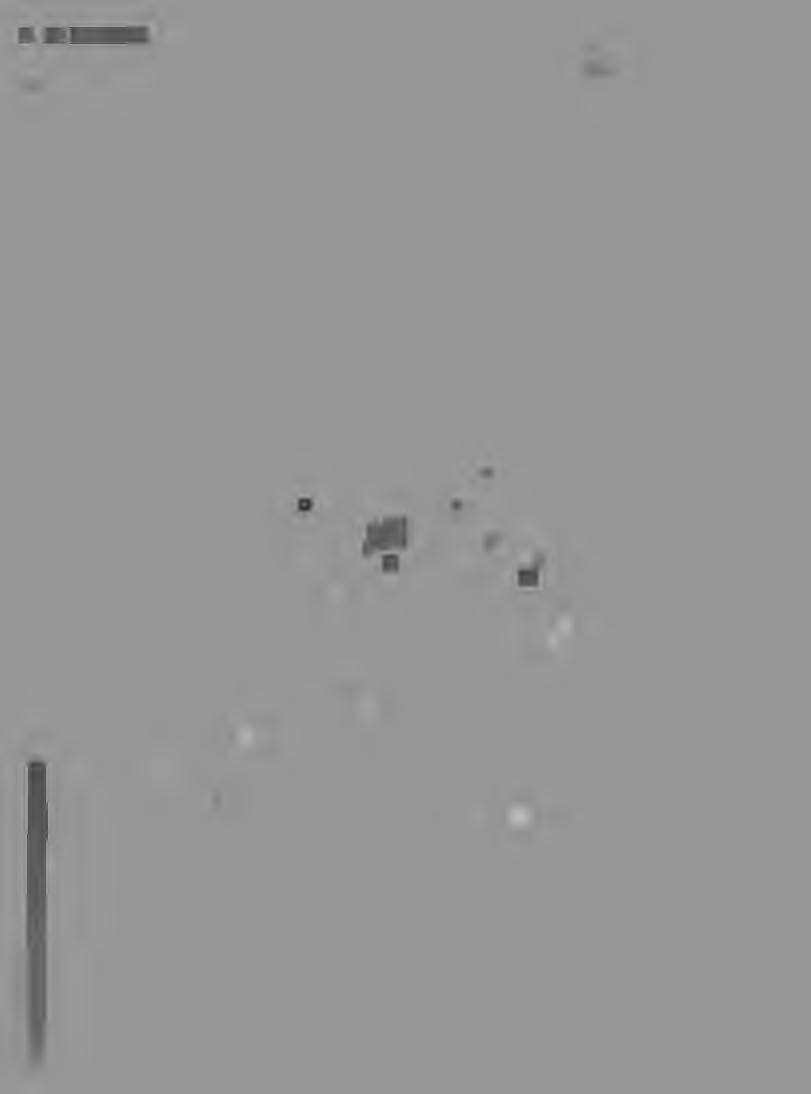
011 REGIONALTRIENNIAL b, X (Y) .._:z et: a.. >w --, :.:: :z _J <{ 2: ::c u et: <{ ,._c:, c:, N (/) 0 w u _J - >z ;:::: <{ :z ;;:_ ::::, :t'. o::· w :z > :z "' w a.. co 0 et:
THEATTRACTIONSOF CINEMA
JULIANNESWARTZ,PLACEMENT(BLUE SKY),2007, C-PRINT,14 X 20 ½", COURTESYMIXEDGREENSGALLERY,NYC

THEATTRACTIONSOF CINEMA
JULIANNESWARTZ,PLACEMENT(FAMILY),2007, C-PRINT,14 X 18", COURTESYMIXEDGREENSGALLERY,NYC
- =--
u, rn n 0 0

Susan Wides is the most specific of these 'New Romantics' in her address of a 19th century precedent. Her Kaaterskill series addresses directly the legacy of the Hudson River School painters, who transformed wh~t was in actuality an already blighted industrial landscape into a sublime vision. Wides revisits locations made famous in paintings by Frederick Church, Asher B. Durand, Sanford R. Gifford, and others, manipulating the lens and film back of her 4x5 camera to replicate the way the eye darts from place to place across a landscape, focusing in on ce'rtain details while ignoring others. Unlike her 19th century predecessors, she does not edit out inconveniently contemporary details - and given the specificity of the camera's all-devouring gaze, one occasionally encounters a latter-day hiker, a rusted car, or other stark reminders of the reality of our own time in the pictures.
THE ANTI-ROMANTICS
Photography serves as the pre-eminent medium for communications in and the articulation of mass society. The ubiquitous presence of photography in commercial applications (especially advertising and graphic design) makes it an especially tempting target for the photographers in this section. Rather than embrace the pleasures of Romantic form, Joan Barker, Rob Penner, and Sam Sebren actively seek to deconstruct the normative circuits of desire, as propagated in what the writer Roland Barthes cited as the new bourgeois mythologies - undercutting and/or revealing the seamier side of the (photographic) fetishes generated by commodity culture.
On a trip to Belize Joan Barker noticed a large construction site, a development of new condos on the beach. Surrounding the site was a chain link fence (replete with barbed wire on top), that had been draped with huge plastic scrim, advertising the development, which included enormously enlarged photographs of typically appealing tourist images: chairs on the beach, a diver silhouetted against deep blue water, and others. This use of photography to create a real estate fantasy world, even as the very development itself encroaches on the natural environment (the very reason people enjoy vacationing there to begin with) is re-contextualized - or is it re-re-contextualized? Her photographs of the photographs call attention to the construction of this vision of desire by (in presenting the work in exhibitions) piecing the pictures together in an overt grid of semi-glossy,plastic photographic paper pinned directly to the wall.
Sam Sebren's deliberately low-res video draws attention to the conventionalized way that many people encounter photography and video everyday.Using a 'disposable' video camera purchased from a local drugstore, he shot video of what must be considered some of the least picturesque scenes imaginable in New York's Columbia and Greene counties - selfstorage sheds, tacky roadside advertising, and other choice examples of visual pollution left behind by consumer society. When the camera is returned for processing, Rite Aid helpfully creates a mini-movie by randomly editing together scenes from the tape, compiling a 'Best Moments' video, complete with cheesy, middle of the road music. The contrast between the imagery and the lowest common denominator quality of the Rite Aid packaging ofit serves as a stark rebuke of the complicity between photographic media and the throwaway consumer world we live in.
In a related vein, Rob Penner's series Remains of the Day is evidence of his fascination with the garbage being left behind on a construction site near his home. Stopping by at the end of the day, he photographed individual bits of the detritus (leftover lunch containers, soft drink cans, cigarette packets, and so on), later processing them in Photoshop to throw them into an exaggerated, almost cinematic lighting. Like a celebrity unsuspectingly caught in the flare of a paparazzo's flash, the glamour of these consumed packages quickly fades with the realization that we are looking at the end point of the cycle - at garbage.
w >--0 0 (/) u i= z <( ::.: 0 a:: i= z <( w :r: >013 REGIONALTRIENNIAL
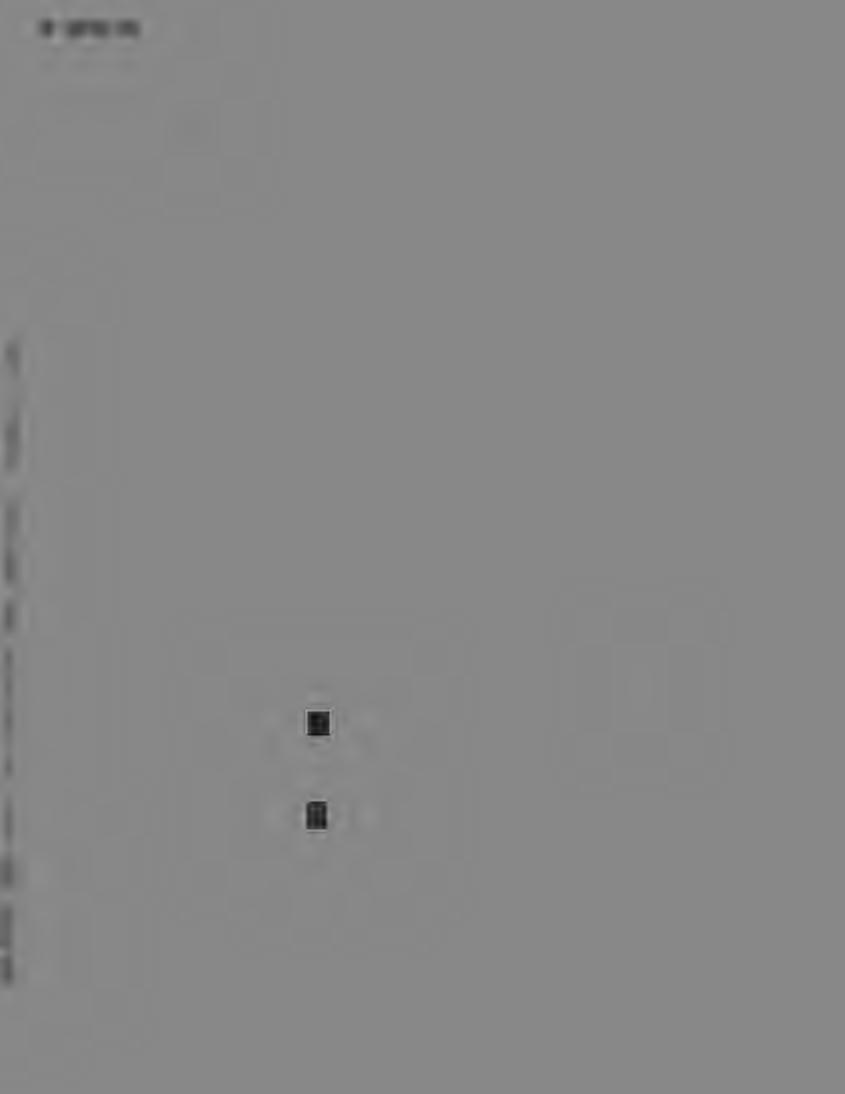
P 014 SEC 001
THE ATTRACTIONS OF CINEMA
Still photography begat cinema. It can also be argued that in return, motion pictures revolutionized the way we encounter still photographic images. The ubiquity of the moving image seen every day via ~ovies, television, and YouTubehas reshaped the horizon against which photography itself is understood. One of the more intriguing effects of cinema has been the folding of the subjective into the objective, and vice versa - what film theorists have called 'suture,' meaning the way we seem to stitch ourselves into the story being presented. Peerna, Penner, Swartz, and Wides have found ways to foreground the cinematic influences of what Susan Sontag once called 'the ecosystem of images,' and in the process bring to light the complexities and complicities of contemporary subjectivity.
Jaanika Peerna's Shoreline 2008 is a single-channel video made up of a single, extended shot of the urban river of life, as seen reflected in the highly polished hood of a car parked along Fifth Avenue. Peerna flips the image, creating a momentarily disorienting experience of the reflection, and at a certain point shifts gears and runs the recording backwards, creating a little eddy in time.
Julianne Swartz does not identify herself primarily as a photographer and has produced not only photographs but also sculptural works that invoke the original technological source of the medium, the camera obscura. Placement plays with displacements oflight, setting up situations where the world reflects back on itself, a recursive play with that old idea of the 'mirror with a memory.' Like mirrors themselves, her images interweave the seemingly opposite poles of objective and subjective, inviting us to comprehend simultaneously both the gulf and the connection between the two, as it is sculpted in space and time by light.
Rob Penner's Vantage Point series plays on the ambiguous, twinned position of the photographer/viewer. These seemingly random images of people in a park-like setting, viewed from on high, at first blush look like frames from a movie. Looking at them individually, the God's eye view they present eventually turns troubling - who am I, as I watch these people? A peeping tom? A sniper? The possible readings of these images seem to multiply exponentially, the longer you look at them.
The Mannahatta series by Susan Wides takes in sweepingly cinematic views of the city, inspired in part by Paul Strand's famous film, Manhatta (1921), a silent film showing the day-to-day life of New York City.Again the views are from up high, and, as in her Kaaterskill landscapes, she manipulates the film plane of the camera to pull sections of the image in and out of focus. At first glance, this manipulation creates the impression of looking at a detailed model set, a feeling that is only partly shaken on closer observation. Mannahatta raises the question: at what point does the cinematic framing of experience eclipse our belief in perception itself?
By bending perception through the selective deployment of strategies such as framing, focus, and shifts in scale or perspective, the viewer is challenged to make sense of the results. It is my hope that these 'lies,' taken together, will help to reveal a larger truth about who and what we are now, in a world that is so fundamentally altered and constructed by the photographic image.

The Camera Always Lies, CPW's 2008 Regional Triennial of the Photographic Arts was originally presented as an exhibition curated by Beth E. Wilson at the Centerfor Photography at Woodstockfromjune 14 -August 17, 2008.
015 REGIONALTRIENNIAL a: >- :z 0 (/) w ::::, <( >- ::::, :z CD :::E (/) 0 :z >-::::, u <( :z (/) (/) (/) :::E w ::::, w :z w :::E u 0 Cl... ::::, u :x: 3 a: :z >- <( D a Cl... 0 ::::, :z w Cl... 0: 0 - <( >-' :z >:'.::;<( (/)(/) :z u :x: <( ;;:; 0 z >- 0: <( LL w :'.::; >D :x: D :::E <( :z u (/) <( :z w :z u <( w :::E <( w 0 ::::; D w :x: :x: >- :::E >- u w :::E ' >>- LL >- '(/) D -' -' CD !;;;:Cl... ::::, Li:: w - w (/) a w (/) :x: :::E w <( :x: :::E ~zo :::E >- :x: :x: DD w LL (/) 's:: a: > (/) :z D >- "'= <( u :z :z (/) w a: w (/) LL u (/) u D ;= w w (/) ;= z' (/) 0: :z :x: (/) a::Cl... :z Cl... :,: :z <( >- 0 ,ef D w :z :::E :z >- <( w (/) ;= u :::E w (/) ::::, 2 u <( :x: W D <( 0: :x: >- 0: - c/2 0: <( Cl... u w >- :x: u "'=w (/) (/) u :x: 0: :z -' e- 3: D D ::::, w w (/) :z u Cl... :x: :x: "'=-' <( :z s >- >- <( u::::, • Cl ) ) "' a. _L) c,:: < z I ..._, 2 7 <( I z > 0: <( ,~ ' :.,c_ 0: C) 3:
The Camera Always Lies : Photographers' Discussion

The editors of PQ invited curator BETH E. WILSON to conduct a roundtable discussion with the artists featured in The Camera Always Lies. This dialog conducted through emails and held in May 2008 served as a forum for these nine artists to address both the concept of the photographic 'lie' but also their own work as seen in the context of The Camera Always Lies.
'truthful' or 'untruthful; there are so many variables to every situation, filtered through human experience and mind. How could it be any less or more of a lie?
SUSAN WIDES
How could it be [purely objective]? A chemical in the retina converts light into electrical impulses that the brain interprets as vision. And the partiality of photography is built into the mechanics of the camera, the lens, the light sensitive material.
When an assistant on one of my shoots sees the contact sheets, they are always surprised - as the site doesn't look anything like what they had seen there. I love to transmit the experience of seeing what I see in my mind's eye, but which may not be perceived by the naked eye.
KATHLEEN SWEENEY
Ever since the invention of photography and film viewers have been grappling with its inherent trompe l'oeil, its trickery. It is no accident that one of the early masters of French cinema, George Melies, started out as a magician. The art of rendering the natural world onto a photographic page, a cinema screen or a pixilated LCD surface emerges always as a form of magical mastery, a series of inventive steps toward an illusion of reproduced reality that we continually navigate as consumers of visual fantasy. That a twodimensional medium can draw in our attention and engagement at a level akin to hypnosis means this lying art form captivates another form of our collective imagination beyond so-called day-to-day reality. It lies, and we love to comply in suspended disbelief.
As I wrote in the preceding article, the camera 'always lies', but maybe it's worth wondering whether it's possible for the camera to speak truthfully in the first place. What's the relationship between photography and truth, as you see it?
JOAN BARKER
To say that the camera or photography always lies may be a little unfair. Images produced through the lens certainly represent the subjective perception of the photographer, so though the image may not be a lie per se, it clearly represents only a single perspective. Cropping, printing, editing, juxtaposition and presentation also transform the image. The 'lie,' then, of this recorded observation continues, as each viewer's response and interpretation is influenced by his or her own ideas.
JULIANNE SWARTZ
The camera leaves room for a constructed, subjective 'truth.' I see photography as entirely subjective, the subject and circumstances around the subject are composed, and context is everything.
JOHN DUGDALE
Since everybody sees everything completely differently anyway, there's nothing less truthful than a photograph of somebody. Two people can look at the same person and see somebody different, you can look at the same flower, and it looks different. So there is no
Why do you think we (as a culture) have such high expectations of photographic media? No one would think of putting questions to a painting or drawing in the way that we do to photography. Why do you think people seem so ready to suspend their disbelief in the presence of a photographic image?
JOHN DUGDALE
I look to history for the answer to these questions. Whenthe daguerreotype came out, it was called a 'mirror of life'. I think that one of the miracles at the time for people was to see an exact likeness of themselves on this little mirrored jewel that they're holding in a case. Maybe over the years, photography has been understood as this perfect representation. I think that people expect extreme clarity and perfect representation in a photograph because of the way it started. Painting is filtered through somebody's eye and hand, right through their body onto the canvas. A photograph is meant to be a mirror, in most people's understanding.
ROB PENNER
It speaks to the concept that in photography we 'take' a picture while a painter 'makes' a painting. The difference between the two is where I believe the controversy is. We take a photo with a device that is familiar and prevalent to society in general. There is a sense that it's easy and anyone can do it. On the other hand, making a painting or a sculpture or the like, requires a trained or inherent talent. The familiaritywith cameras and photography in the consumer
016 SEC 002
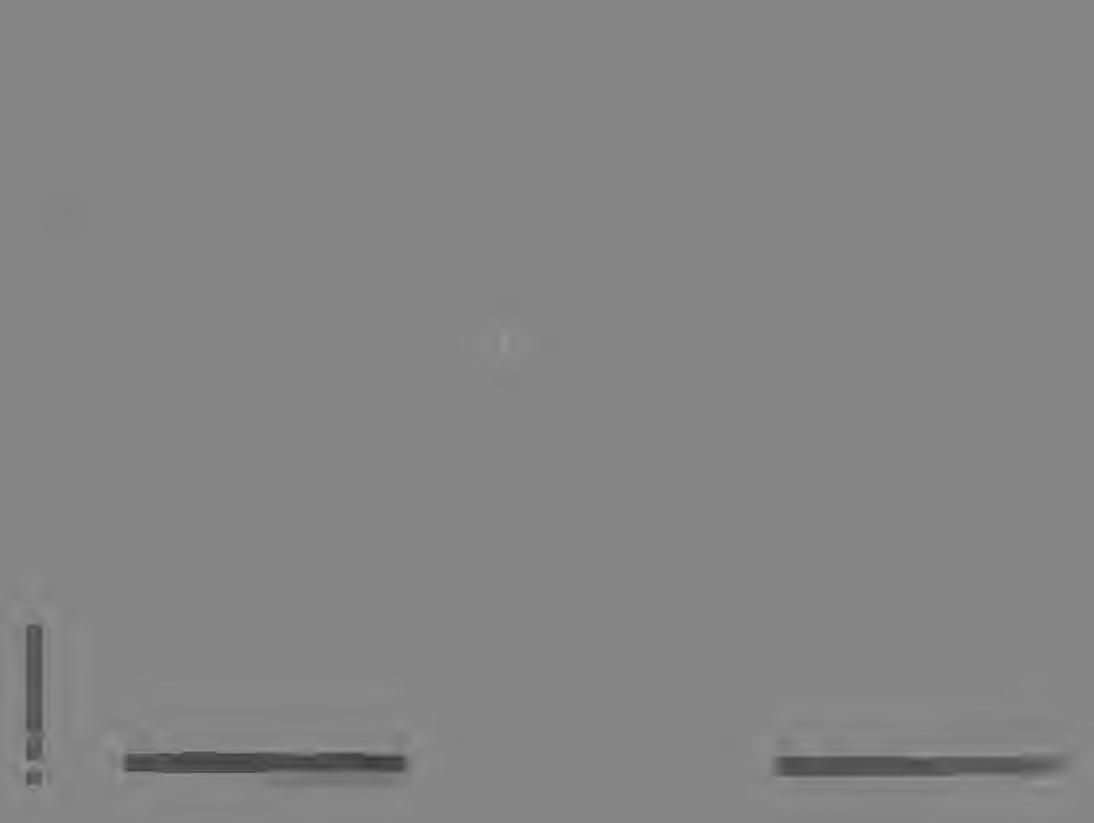
THEATTRACTIONSOF CINEMA JAANIKAPEERNA,STILLFROMSHDREIINE,2008, DVD/ VIDEO
HE NEWRI MAN IC KATHLEENSWEENEY,STILLFROMWAVES2005, DVD/ VIDEO
0
world has, in my opinion, diminished the essence of the photograph as art to the average view~r. Familiarity breeds contempt. Photographs in their essential form are evidence of a moment. The image is what's left behind after the moment transpires. It can never be reproduced in its truest sense.
JAANIKA PEERNA
What is special about photography is that the magic of the particular light at the moment the photographic image is captured. The image becomes uniquely concrete through the play of the light in the situation. There are many ways to frame, edit and change the image, but the essence of the moment when and where the image was taken still remains.
ION ZUPCU
To a certain extent, I think photography is the art form that is closest to reality. The subject, in my case, is what it is - a small strip of black paper that exists, and can be seen in the image. It begins as an 'objective' image, but then I start composing/staging, choosing the lighting, angle, and many other tricks.
JOAN BARKER
Photographs are sometimes used in forensics to document reality. Consequently, many people expect photography to tell some sort of objective truth. This may be part of an historical perception that just because a mechanical device was used to record the image, the photographer's emotions and thoughts were not part of the process. But just as an eyewitness's testimony may be distorted due to the inaccuracies inherent in memory, photography can be unreliable. The camera's eye is physically limited. In spite of this acknowledged lack of accuracy, we continue to rely on both.
Is there a measurable difference between images found 'in the wild' - reflections in water or in windows, for example - and those that are photographically fixed? Is there a qualitative difference between these things that interests you?
JAANIKA PEERNA
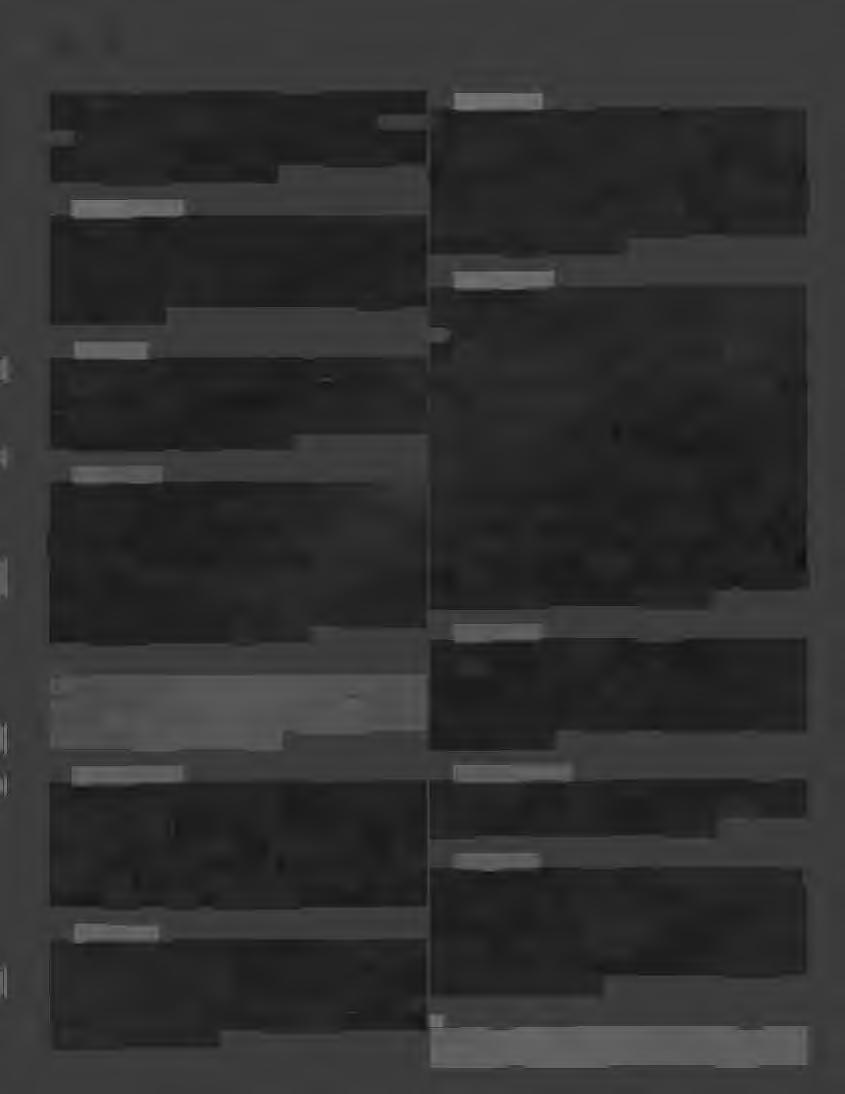
SUSAN WIDES
I like to keep the viewer aware of the lens as its view reflects the way we experience memory, history and oneself. The altered image [seen in my work] offers an accurate view of the reality of our world today. I use the urban and natural landscape as a palette from which I derive images and recompose them to reflect on the significance of images themselves. I invite the viewer to join me at the moment of discovery when perception suddenly changes and the recognizable and familiar image is reimagined.
JOHN DUGDALE
A long time ago I stopped encountering 'stuff' in the world. [Fifteen years ago, Dugdale lost most of his sight from an AIDSrelated stroke. - BEW]Things that are fixed in my mind, what makes them appear are words, or relationships. When people hear that I have a visual impairment, they say "how can you be a photographer?" Because the first thing that people think about in general when you say that you are a photographer, is not about setting up tableaux in the studio, they think about walking around outside and catching something beautiful. That's clearly not what I am able to do, nor did I ever really want to do that. People automatically assume that you go outside and look for things, rather than looking inside, and then making them. I use the camera like a canvas, to create the stuff that inspires me, looking at subjects like my mother (who's like a novel), or at flowers. People say that daffodils don't really smell, but I'm not sure what they're smelling, because to me they smell like fresh air. I can still see them in a blur with my eye, but when I sniff the thing, or I hold it, it becomes much more real. The photographs are my way of transforming things into that kind of experience.
JOAN BARKER
Images in the wild flow, change and move on. I make photographs of a place and time because I am moved by the truth of that decisive moment. The photograph fails ifI am not present in intuitive ways. If some elements of that moment of truth remain through the reproduction process, there is hope that the photograph will provoke thoughtful response.
JULIANNE SWARTZ
To me this is a most intriguing question. Once an image is photo-The fleetingness of the event in real time makes it both more and graphed or recorded, I can transport it. But if I could transport an less vulnerable. I would say the camera allows me to alter a familiar original, 'wild' image, I would much rather do that. Even ifI look at reality to create a constructed, unfamiliar 'reality.' a reflection in water or in glass, I am already taking it out of its original context by calling attention to it. I point towards it and say, SAM SEBREN "look at this.'' I control the way it is viewed. So images in the wild There is no substitute for nature, all of its beauty and violence inare more open. Once they are captured, they become more defined. eluded. And there is no improving upon nature by photographing it or painting it. I question separating ourselves from nature through ROB PENNER art. It removes the actual experience by another level. However, In my mind, there's no difference. I believe that all images, regardless depicting our increasing separation from nature through art may of their origin or intention, have equal value. That said, I feel that be educational. I highly recommend nature over 'art' any day. Even 'wild' images, as you call them, maintain a more organic feel and stormy, cloudy, freezing days. require less intervention by the artist/photographer. Fixed or produced images have equal value even though they are created tospecifically illustrate an idea.
How has your work been inflected/ informed by the mass media applications of photographic media? Does this larger cultural
018 SEC 002

'ecosystem' of images - Walter Benjamin's essay, ½ge of Mechanical Reproduction,' which we're now living with a vengeance - mean certain things are possible for you artistically, and others not?
ION ZUPCU
We definitely see more images today of other artists' work, which tend to be more or less known artists. This makes it easier to grow mentally as an artist these days -expanding the things we have to say after becoming aware of others people's work. The trends are shorter, more frequent, and more ... spectacular. Of course, the other side of the coin is that we are growing more superficial, from seeing so many things.
SAM SEBREN
LatelyI have been enjoyingthe ability to collaborate and communicate more easily with other artists via computers. Combinations of old analogue and new digital media are also very exciting. But every photographer I've talked to feels that nothing has replaced the gorgeously rich depth of silver gelatin prints made from film. It's sort of sad that people have replaced the idea of quality with speed. Is it good if everyone is taking pictures of everything with their cell phones instead of reacting to a government that is busy trying to take over the world and screwing up the global economy in the process? Should we even be wondering about theories in art right now? Most people are sleeping while the most disparate economic gap in the history of the world is steamrolling right through our homes and communities. This is the most important time for artists to help people understand this through poetic, poignant, clear work. Photography is a vital form of communication -lies, evidence, art, or otherwise, but we must be aware to keep in mind what is advertising, what is propaganda, and what is art. With the new technologies now, though, I see kids using everything they've got to make art in phenomenally new and creative ways. I see people able to make movies and show movies without any corporate control. I see people making their own rules, ignoring dogmas and definitions in these wildly uncertain and unlimited times. That is what excites me.
JOAN BARKER
I became fascinated with seeing the beach right next to the large advertising banners for condos on the beach; seeing large, cheaply produced photographic scenes displayed side by side, outdoors, in the very environment which is being offered for sale, and simultaneously destroyed by the development. Behind these reassuring, touristfriendly scenes, the natural habitat and fragile ecosystems are being destroyed. Looking at my reassembled panels of plastic prints of all this, the viewer will be able to choose a truth: vacation home, destruction of the environment, real estate investment, or serene beach? So I'm using photography here to draw out the implications of that other, overtly commercial, use of the medium, in a way that opens it for the viewer to decide [what it all means].
KATHLEEN SWEENEY
Benjamin's assertion that the reproduced image lacks the "aura'' of the original may have been true when paintings found their way into print, but the light-based media offilm often locates the aura in the
simplest of forms by establishing that visual kinship. I don't always see like a camera, but once that shift occurs, I enter into another form of meditative intimacy with my surroundings. It's essentially an ability to frame, to construct an image in snapshot, to roll tape in my head.,. the ability to see like a camera allows access to a recognizable form pf visual sublime that is very personalized in its capture.
JAANIKA PEERNA
When confronted with mass media imagery, I tend to think, "I can't get as flashy as that, I can't go so fast," so instead I slow things down, try to get under the skin of things, and dig into the depths of whatever I am filming. I hardly move the camera. I ask the viewer to spend about six minutes watching a moving image in which most of the changes are quite subtle, and there is no narrative. I point my video camera towards carefully chosen ordinary phenomena, such as water moving around a rock, or a reflection on a car, and record long takes without moving the camera in the hope that something essential about the object reveals itself. I'm not selling anything, I'm not telling a story. I want to draw you inward and also make you more alert.
JOHN DUGDALE
I'm actually shying away from that [mass media]. There's a very beloved picture of my mother and I, where she's holding me against her chest. It was printed in my first book. I went to Italy and showed that picture, and a woman wanted to know if it would be ok to use it to make billboards about Alzheimer's. It so took me aback, I had to think about it-I always want to help with anything I can, but in the end I said no. I couldn't imagine seeing that intimate picture of my mom blown up, by the highway all over Italy. It seemed to devalue the picture, not in a monetary way, but it took away the intimacy of it. I want to stay on the other side of the superfast cutting of images on TV in commercials and videos, and the omnipresent barrage of images. It makes me cringe to think of being a part of that.
So you're a conscientious objector?
JOHN DUGDALE
Yes,very much so. But I don't think that people cannot participateyou can't divorce your art from the current moment completely. I grew up on Bugs Bunny,the Munsters, and every other thing that was on TV then. Once that stuff gets into your mind, it's permanently in there, you can't erase it.
It's all really relative, though. People in the 19th century were excited to go 6 miles an hour on the railroad. You look at the work from then, and it's no wonder it's so quiet and peaceful [compared to today]. I am consciously trying to keep that alive. That's what I love about using all these old processes. It's about seeing more slowly.
019 PHOTOGRAPHERS'DISCUSSION
A, -RACTION FROMLEFTTO RIGHT IONZUPCU,MARCH8 2004.TONEDSILVERGELATINPRINT,14 X 14", IONZUPCU,MARCH6. 2004.TONEDSILVERGELATINPRINT,14 X 14", IONZUPCU,MARCH2. 2006 TONEDSILVERGELATINPRINT,14 X 14", COURTESYCLAMPART,NYC

BIOGRAPHIES
BETHE. WILSONIS AN ART HISTORIAN,CRITIC,ANO CURATOR.SHE TEACHESARTHISTORYAT SUNYNEWPALTZ,INCLUDINGCOURSESON THEHISTORYOF PHOTOGRAPHYAND THEHISTORYOF FILM. IN 200506, WILSONSERVEDAS INTERIMCURATORAT THE SAMUELOORSKY MUSEUMOF ARTAT SUNYNEW PALTZWHERESHE ORGANIZEDTHE EXHIBITIONTHEMATERIALIMAGESURFACEANOSUBSTANCEIN PHOTOGRAPHY.SHE HAS BEENTHE RESIDENTART CRITICFORCHRONOGRAMMAGAZINESINCE1999 ANO WASTHE CURATOROF THE 2007_ KINGSTONSCULPTUREBIENNIAL.
JOANBARKERIS AN INDEPENDENTPHOTOGRAPHER,ARTISTAND EDUCATOR.SHE COMPLETEDHER MFA IN PHOTOGRAPHY AT SUNY NEW PALTZWHERESHE HASTAUGHTFOROVERTENYEARS.JOAN IS THE RECIPIENTOFA NYFAFELLOWSHIP,THEVILLAGEVOICEPHOTOGRAPHY GRANTANDTWOPHOTOGRAPHERS'FELLOWSHIPFUNDAWARDSFROM THE CENTERFORPHOTOGRAPHY AT WOODSTOCK.HER PHOTOGRAPHS HAVEBEENFEATUREDNATIONALLYIN BOTHSOLOANO GROUPEXHIBITIONSAS WELLAS FEATUREDIN NUMEROUSPUBLICATIONS. > WWW.JBARKERIMAGES.COM
IN 1993 JOHNDUGDALE,HAVINGACHIEVEDA SUCCESSFULCOMMERCIAL CAREER,SUFFEREDAN AIDS RELATEDSTROKE.AFTERMONTHS IN A HOSPITALOFTENNEARDEATH,HE RECOVERED-BUTCMVRETINITISTOOKALL OF HIS SIGHT,EXCEPTFOR20% OF PERIPHERALVISION OF HIS LEFTEYE.TOTALBLINDNESSCONTINUESTO THREATENHIM. DUGDALECHANGEDHIS METHODOF WORKING,BECOMINGA VISUALLYIMPAIREDPHOTOGRAPHER. BY USINGAN ANTIQUELARGEBX10 FORMATCAMERA,WHOSENEGATIVESCANBE CONTACT-PRINTEDONTO HANO-COATEDPHOTOSENSITIVEPAPER,JOHN WAS ABLE TO AVOID THEIMPOSSIBLEDARKROOMPROCESS.HIS PHOTOGRAPHSAREIN THE COLLECTIONOF METROPOLITANMUSEUMOF ARTANO HE HAS HAO MORETHANTWENTYSOLOEXHIBITIONS. > WWW.JOHNOUGDALE.NET
JAANIKAPEERNAWORKSAT THECROSSROADSOF DIGITALAND TRADITIONALMEDIA,OFTENDEALINGWITHTHETHEMESOF WATER,SIMPLICITYANO SILENCE.SHE HOLDSAN MFA IN INTER-MEDIADESIGN FROMSUNYNEWPALTZ,ANOSHE HASWORKEDAS TEACHINGARTIST AT DIA BEACONAND THEVISUALTHINKINGSTRATEGIESPROJECTOF THE SOROSFOUNDATION.PEERNAHAS HAO SOLOEXHIBITIONSIN NEWYORKANO IN TALLINN,ESTONIA,HERNATIVECOUNTRY.IN 2005 PEERNAWAS INCLUDEDIN THE PUBLICATIONCOMPONENTOF CPW"S INAUGURALTRIENNIAL.UPCOMINGEXHIBITIONSINCLUDESOLOEXHIBITAT GONORTHGALLERYIN BEACON,NY ANOPARTICIPATION IN A GROUPSHOWNEWAT GALERIELAVIGNES-BASTILLE,PARIS,FRANCE. > WWW.JAANIKA£'EERNANET
--...__ "'--
0 0 "' rn r, 0 0 N
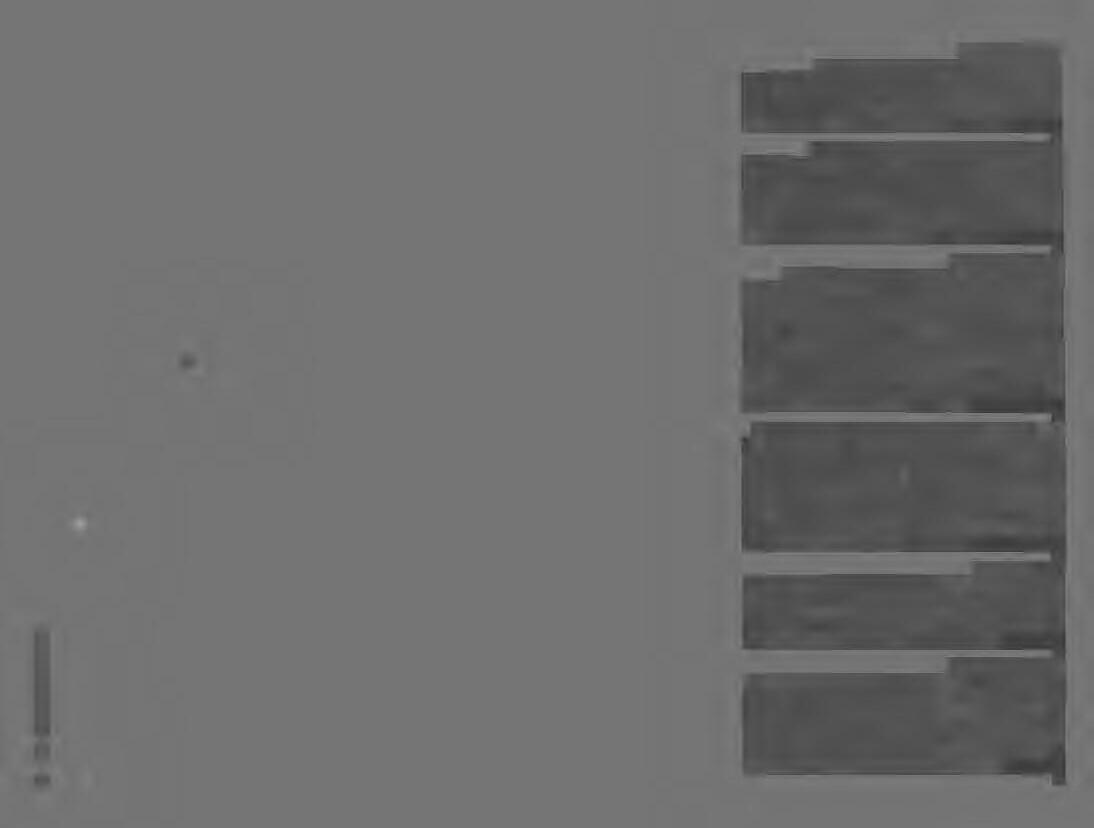
ROBPENNERSTUDIEDPHOTOGRAPHY ATTHESCHOOLOF VISUALARTS IN NYC.AFTERLEAVINGSVA,ROBBEGANA COMMERCIALPHOTOGRAPHYCAREERSPECIALIZING IN FASHIONANOADVERTISING.AROUND1990, ROBMOVEDINTOGRAPHICDESIGNANOPRODUCTIONEVENTUALLYSPENDINGTHE MAJORITYOF HIS CAREERMANAGINGTHE PRODUCTIONOF ADVERTISINGMATERIALS.THISPASTYEARPENNERDECIDEDTOCLOSE THATCHAPTEROF HIS LIFE ANO MAKETHECOMMITMENTTO HIS ART. > WWWROBPENNERCOM
SAMSEBRENIS A MULTI-MEDIAARTISTBASEDIN ATHENS,NY.HE HAS HAONUMEROUSSOLOAND GROUPEXHIBITIONSIN NEWYORKANO IN NORFOLK,VIRGINIA.SEBREN'SMOSTRECENTEXHIBITIONSINCLUDEA PERFORMANCE/ACTIONPIECEFORTHEWHITNEYBIENNIALAS WELLAS GROUPSHOWSTIME'SUPI ANOAMERICAFORSALEAT PROTESTSPACE IN NEWYORKCITY.
JULIANNESWARTZRECEIVEDHER MFA IN SCULPTUREFROMBARD COLLEGEIN 2002. SHE HAS EXHIBITEDHER WORKIN ONE-PERSON SHOWSTHROUGHOUTTHE UNITEDSTATESAS WELLAS SOMEIN THE U.K,CHINA,GERMANY,ANO IRELANOANO INCLUDEDIN EXHIBITIONS AS SUCH INSTITUTIONSAS TATELIVERPOOL,WHITNEYMUSEUMOF AMERICANART,NEWMUSEUM,PS 1/MOMA,ANOSCULPTURECENTER. SHEIS THERECIPIENTOF NUMEROUSAWARDSANDGRANTSINCLUDING MOSTRECENTLY,NYFA'SARTISTFELLOWSHIPIN SCULPTUREAND THE PS 1 MUSEUM'SNATIONALANO INTERNATIONALSTUDIOPROGRAM.
KATHLEENSWEENEYIS A MEDIAARTISTANO WRITER.SHE HOLDSA BA IN FRENCHLITERATUREFROMNEWYORKUNIVERSITYANOA MA IN INTERDISCIPLINARYARTSFROMSAN FRANCISCOSTATEUNIVERSITY.OVERTHEPASTTENYEARS,SWEENEY'SAWARD-WINNINGVIDEO ART HAS SHOWNAT SOUTHBY SOUTHWESTFILM FESTIVAL;DENVER INTERNATIONALFILM FESTIVAL;WALKERART CENTER;THE KNITTING FACTORY;ANOZENTRUMFURKUNSTUNOMEDIENTECHNOLOGIE,GERMANY.SHE RECENTLYPUBLISHEDA BOOKABOUTTEENAGEGIRLS, REPRESENTATIONAND MEDIA ENTITLEDMAIDEN USA GIRL ICONS COMEOFAGE (NEWYORKPETERLANGPUBLISHING,2008) > WWW.VIOEO-TEXTCOM
SUSANWIDESEXHIBITSHERWORKREGULARLYAT KIM FOSTERGALLERYIN NEWYORKCITY.HERWORKHASBEENFEATUREDIN FIFTEEN ONE-PERSONSHOWSANOOVERSIXTYGROUPEXHIBITIONSIN THEUS ANO EUROPE.TEXTSABOUTHER WORKHAVEAPPEAREDIN ART IN AMERICAARTFORUMNEWYORKTIMES NEWYORKERVILLAGEVOICE AMONGOTHERS.SHECONTRIBUTESTOMAGAZINESSUCHAS HARPERS DOUBLETAKEARCHITEClURE,2WICE ANO NEWYORK
IONZUPCUWAS BORNIN ROMANIA;HE NOWLIVESANO HASA STUDIO IN HOPEWELLJUNCTION,NEWYORKHE GRADUATEDFROMTHE PROFESSIONALSCHOOLOF PHOTOGRAPHERS,BUCHARESTIN 1983. ZUPCU'SWORKHAS BEENEXHIBITEDIN ROMANIA,ENGLAND,HONG KONGAS WELLAS THROUGHOUTTHEUNITEDSTATES. > WWW.IONZUPCU.RO
7' ,c a g I "' a I
Juried by Julian Cox, Curator of Photographs, High Museum of Art

It was a pleasure to review the photographs submitted this year. The juror's privilege is the joy of discovery. I am always on the lookout for something that I have not seen before -a point of view that expands my horizons and redefines the boundaries of my taste and knowledge. I am attracted to work that reveals an understanding and awareness of the materials and traditions of photography, while also offering a fresh perspective on a subject or theme.
Photography remains an unruly, "anything goes" medium. Despite the profusion of images that define our culture, enough good pictures are being made to remind us of photography's persistent relevance and value in our lives. The artists selected here deftly navigate a world of half-truths and fiction, bringing to the surface the rhythms of life that often pass us by. They show us what is possible when vision, craft and imagination are aligned toward a common goal.
Julian Cox is Curator of Photography at the High Museum of Art, Atlanta. He previously worked at the J. Paul Getty Museum in Los Angeles, where he was curator of photographs. His recent publications include Julia Margaret Cameron: The Complete Photographs (2003), Spirit into Matter: The Photographs of Edmund Teske (2004) and Timekeeper: The Photographs of Anthony Friedkin (2004).
022 SEC 003 I I I 1----t I
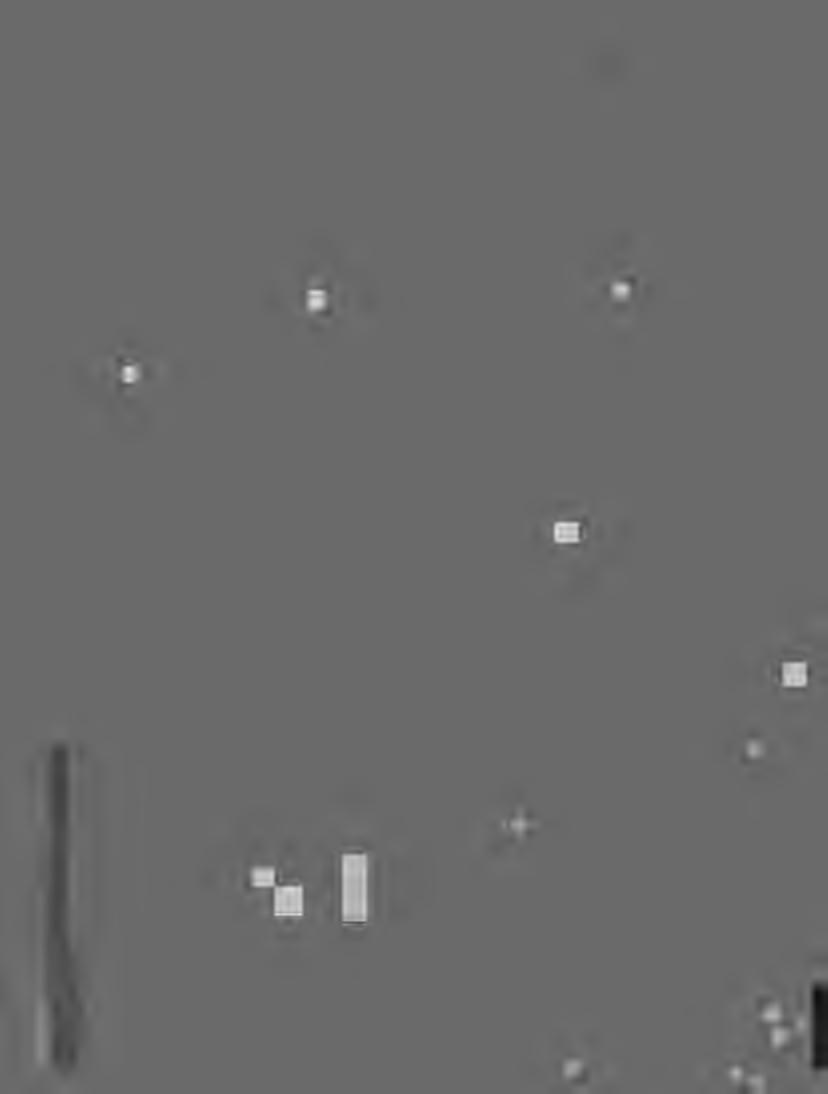
_, :,: u Ct: <( __,. = = "' (j) w Ct: w (/) >Ct: 0 :::;: w :::;: Ct: w :;:
My self portrait project was initiated four years ago when I began photographing my aunt who was confined to a nursing home because of Alzheimer's. Initially, I was immensely affected by the way this disease took away this once vital woman's freedom of controlling her own life. I frequently went to visit and spend time photographing her. Slowly I realized that she and I were alike in that neither of us had children who would take care of us and that one day I might wind up in the same situation. This led to the image Me and My Aunt.
Further introspection led me to continue the self portraits. In Battery Park City Bedroom I wanted to convey the influence of my Catholic upbringing; that suffering is equated with satisfaction. When I saw Bill Brandt's Soho Bedroom, I was reminded of my parents - who have been married for better or for worse for over 61 years - and added the religious symbol of the cross, the ultimate symbol of sacrifice.
My Valentine's Gift is a fantasy representation of life with my husband.

Fran Dickson is a NYC-based photographer specializing in portraits, events, editorial and fine art photography. She is the current president of Professional Women Photographers, a nonprofit organization based in New York City whose mission is to support and promote the work of women photographers. Fran has been exhibiting her work in numerous solo and group shows since 2000. Her images have appeared in several publications, including the Wall Street journal, and are held in private collections worldwide. Recently she received awards recognizing her self portrait work from The Photo Review, Smithsonian Museum of American Art, and the Cooperstown Art Association.
> www.frandickson.com
014 SEC 003 I I I I t---4
tz: z: z: w et: ::E o2 a.. (!) a.. t- 0::: tz: _, z: w w ::E <( ::E (!) =:: (!) 0::: :i::: 0::: u _, et: _, :r: <( <( <( =:: (!) > cri et: :i::: 0 :i::: u 0 u 0 et: N et: f- <( <( ::E t:;::...,- D ...,0 w 0 D D _, 0 et: N N D :;: w t:;:: t- CD z: >- (!) in :::, !:::: (/) <( u 0 "" w > >et: z: CL ::E .= 0 D z: t- >- w z: et: _, ::a:<( w ;; 0 t0:: w t- >L... ::E <( ::E CD z:' z:' X z:' 0 D D 0:, D (/) w "" ::;: (/) (/) 0:: u N "" - "" u u u ci "; en ci D w t-'(!) z: z: z: z: X <( <( <( <( ::a:et: ....et: et: et: 0 LL - LL a.. LL -
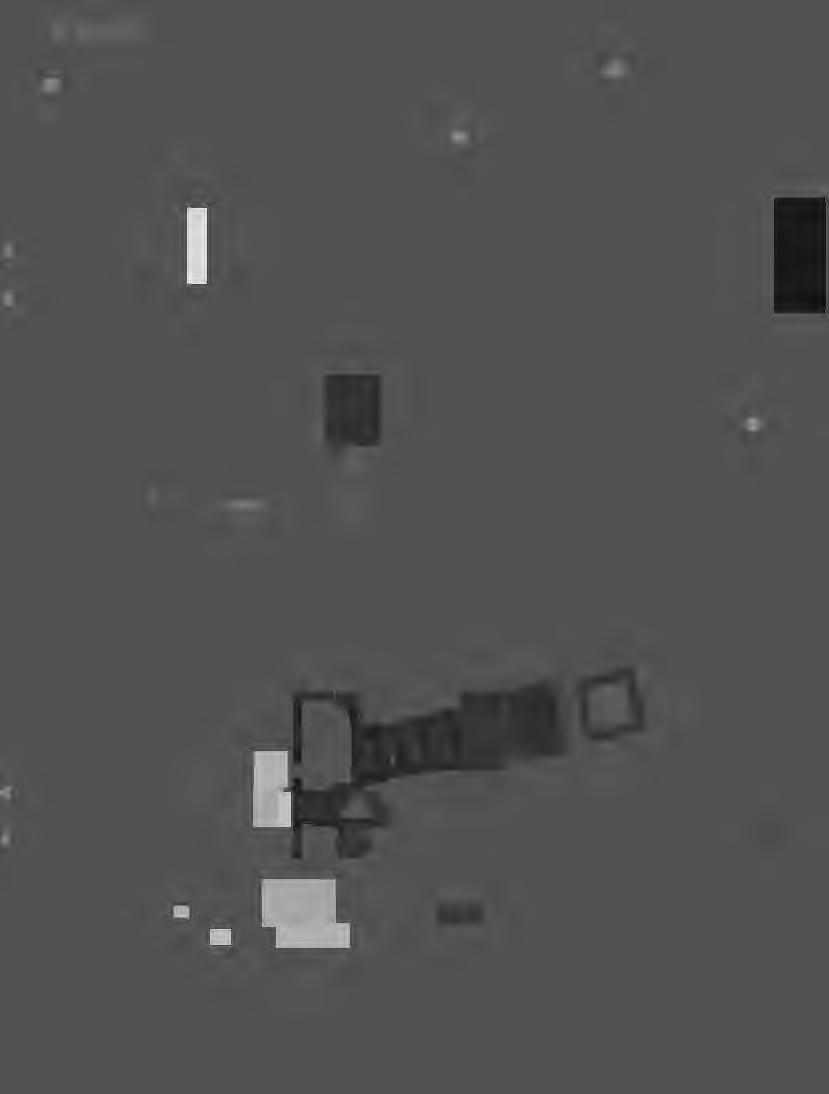
p 025 PHOTONOW
Water M~mory, Land Memory, and SkyMemory

This series of photographs was produced in the aftermath of grief stemming from the death of my parents combined with the hope generated with the birth of my niece. The images were made in the process of understanding and representing these universal human experiences.
I work with images of sky, land, water, death, and new life. I use memory as a symbol for our physical bodies and the earth being connected in a cycle of regeneration.
WATER MEMORY
All water has a perfect memory and is forever trying to get back to where it was. / Toni Morrison
Water courses through the veins of the world. Our memories flow out of those of our ancestors and our actions mirror their actions. The circles of our livesare like water: touching, changing, overlapping, and remembering.
LAND MEMORY
The leaves of memory seemed to make a mournful rustling in the dark. / Henry Wadsworth Longfellow
Our memories and actions are entwined with those of our ancestors. They weave us together, connecting the past to the present while whispering softly to our children.
SKY MEMORY
When once you have tasted flight, you will forever walk the earth with your eyes turned skyward,for there you have been, and there you will always long to return. / Leonardo da Vinci
I know what it feels like to fly. I dream dreams of pushing off the ground into the limitless blue sky. That memory keeps me airborne as I walk the earth.
Helen Hoffelt is an artist and associate professor at Columbus College of Art and Design in Columbus Ohio. She received her BFA from Columbus College of Art and Design and her MFA from State University of New York at Buffalo. She has had four solo shows and has been in numerous group shows.
> www.helenhoffelt.com
I I I I I P 026 SEC 003
IMAGECREDIT
HELENHOFFELT,UNTITLED1 SKY MEMORYSERIES2004 ARCHIVAL INKJETPRINT,20" X 24"

IMAGECREDIT
HELENHOFFELT,UNTITLED7, LANDMEMORYSERIES2004 ARCHIVAL INKJETPRINT,20" X 24"
These photographs were shot in modest, well-worn, suburban cities located in Central Orange County, California. Built in the sos and 6os, these cities provided a new home and future to a post-war population. Today, while southern Orange County's coastal cities flourish with affluence, central Orange County struggles. Future prosperity and civic health seem to come primarily from growing ethnic populations, which are reviving these cities for their communities.
I grew up in central Orange County. After 25 years I returned, and was fascinated by the simultaneous decline and growth. I stayed away from traditional, documentary-style photography; instead I have photographed select buildings and shrubbery in primarily static, symmetrical compositions, reflecting change, irony and evolution.

Brad Moore received his BAfrom Loma Linda University in Riverside, California. In 1984, he started a company called Aperion, Inc., which manufactured and distributed photographic color calibration products for photo labs. For more than 20 years he worked as president of Aperion, until selling the company in 2005. While running Aperion, he also operated a commercial photography studio, specializing in advertising. In 2007 he showed in twelve group exhibitions and a solo exhibition at Point of View gallery in NYC.His desire always has been to focus his attention on fine art photography, an endeavor he is happy to be pursuing full time.
> www.bradmoore.com
I j I I I 028 SEC 003
IMAGECREDIT
BRADMOORE,MINT & MAGNOLIAWESTMINSTER,CALIFORNIA,2006, ARCHIVALPIGMENTPRINT,28 X 42"

IMAGECREDIT
BRADMOORE,METAMORPHOSISDISPLAYSTANTON,CALIFORNIA,2006, ARCHIVALPIGMENTPRINT,28 X 42"
0 N w
Deliver Me

Smokers have become social refugees banished to windy corners and private living rooms. I am interested in the idea that the nation has become so disgusted with this habit that we have tried to legislate smokers out of existence.
Deliver Me is a nonjudgmental look at this group of Americans. In a way I admire people who smoke in the face of social condemnation. Though there is no doubt that smoking is deadly, I see some smokers as fierce individuals as well as addicts.
This project explores a diverse group of Americans united by a habit.
Laura Noel is a fine artist based in Atlanta, GA. Her work has been featured in several solo shows, including shows at Jackson Fine Art Gallery in Atlanta, Gallery 1401 in Philadelphia, The University of Alabama, Callanwolde Fine Arts Center in Atlanta, among others. Her work has also been included in a number of group exhibitions at the Internationale Fototage in Mannheim, Germany, Gallery 24 in Berlin, the Museum of Contemporary Art Georgia, The Colorado Photographic Arts Center, the Hunter Museum of American Art, The Griffin Museum of Photography, The Gregg Museum of Art and Design, and many others. Noel's work is in several collections including The Ogden Museum of Contemporary Art, the Museum of Contemporary Art Georgia, and the Robert Yellowlees Collection. She graduated from Duke University with a degree in Public Policy Studies and is now completing her Masters in Fine Art at the University of Georgia.
> www.lauranoel.com
I I I I I I I I 030 SEC 003
\ I

IMAGECREDITSFROMTOPTO BOTTM
LAURANOEL,Af:112006, C-PRINT,20 X 24"
LAURANOEL,WHITNEY2006, C-PRINT,20 X 24"
0 w
For over twenty years I've documented a diverse social and cultural range of people. My approach to capturing the best possible photographic portrait is to concentrate on the individual's mood or feeling and ask that they place themselves in their most comfortable surroundings. This environmental context helps to reveal an intimate part of the individual and has the potential for establishing a strong personal connection with the viewer.

Donna Pinckley, a native of Alexandria, Louisiana, received a Bachelor of Fine Arts in photography from Louisiana Tech University in 1984 and a Master of Fine Arts in photography from University of Texas at Austin in 1990. She has received Visual Artist Fellowships from the Mid-America Arts Alliance/NEA and the Arkansas Arts Council. Pinckley's work has been exhibited nationally and internationally in over 80 solo and juried shows and also included in several public collections, such as the University of Vera Cruz at Xalapa, Vera Cruz, Mexico, the Photographic Collection at the Harry Ransom Center, University of Texas at Austin and the Alexandria Museum of Art. She has been published in Black and White Magazine, Photo Review Magazine, Smithsonian, and VOA Magazine. She is currently Assistant Professor at the University of Central Arkansas in Conway, Arkansas.
> www.donnapinckley.com
I I I I j I 11 031 SEC 003
IMAGECREDIT
DONNA PINCKLEY,AUSTIN WITH BUBBLES 2005, SILVER GELATIN PRINT,14 X 14"

IMAGECREDIT
DONNAPINCKLEY,ABBY,2006, SILVERGELATINPRINT,14 X 14"
0 w w
The area in which I live has an extraordinary number of homes that are decorated for each holiday with a degree of enthusiasm and neighborly competitiveness that I find both humorous and compelling. Some homes are quirky, some tacky, some rival theme parks in scope and sheer effort to produce, and some are frankly terrifying. All are done by homeowners who obviously feel compelled to bedeck their homes in this way for the benefit of the neighborhood children and for the visual delight of the larger community.
As I photographed each site, I began to look at the details. I became interested in how these elements changed when they were removed from their context. In some cases a mask might look like a real face, plastic like flesh, and mannequins may appear to be human. Other times the objects are obviously fake; they merely represent the current holiday fad in consumer culture. A reciprocal relationship also sometimes exists, and a person dressed in mask and costume might appear to be quite unreal in the photographs. I am inspired by the line between the real and the artificial, the actual and the caricature, the humorous and the horrible. Most of these images intentionally blur those distinctions.

Ward Roe received his BFAin 1986 and MFAin 1991 both from Marywood University. Solo exhibitions of Roe's work have been held at Everhart Museum, Keystone College, Marywood University, Artists for Art Gallery, Marquis Gallery, CameraWork Gallery, (all in Pennsylvania) and at the Pacific Grove Art Center in California. His work has been included in group shows at the State Museum of Art in Harrisburg, PA; the Arnot Museum in Elmira, New York; Silver Eye Center for Photography, Pittsburgh, PA;the University of the Arts, Philadelphia, PA;the Three Rivers Arts Festival, Pittsburgh, PA;and Murray State University in Kentucky. Roe's work is included in a number of public and private collections. He currently is a professor at Keystone College in La Plume, Pennsylvania, where he has taught since 1991. In 2003, he was named '½rtist of the Year" by the Pennsylvania Arts in Education Partnership.
II I I I I 11 034 SEC 003
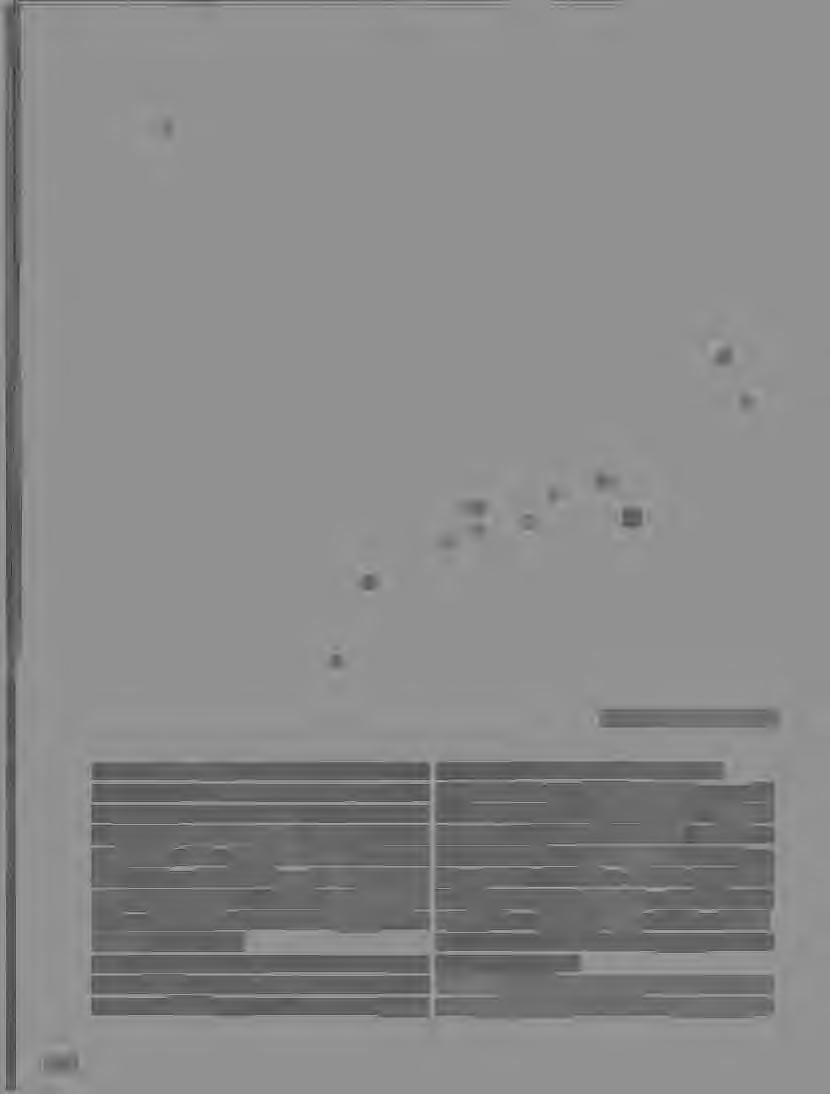
WAR IS ONLY HALF THE STORY,IS AN EXCITING OPPORTUNITY FOR THE PHOTOGRAPHERSAND THE ORGANIZATION. GIVE US AN OVERVIEW OF THE BOOK,HOW IT CAME TO BE AND WHAT YOU HOPE TO ACCOMPLISH?
The publication will feature work from the projects of Aftermath grant winners, as well as samples of work from other finalists. There will be some interviews and essays.It will be co-published by Aperture (New York) and Mets and Schilt (Amsterdam). The idea came about after I met Maarten Schilt and Lesley Martin at Fotofest in Houston in 2006.
YOU AND KRISTEN HAVE CREATED AN INSPIRING AND HEARTFELTORGANIZATION. YOU'VE ACCOMPLISHED A LOT A IN SUCH A SHORT PERIOD. TELL ME WHAT YOU'RE DREAMS ARE FOR THE AFTERMATH PROJECT?
WHERE DO SEETHE ORGANIZATION 5-8 YEARS FROM NOW?
Well, this has been a pretty organic, step-by-step process, so it's hard to know where we'll be by then. I hope, for one thing, that we'll have at least $1 million in the endowment I think I'm most excited about the fact that by that time, we'll have several years of grant winners to look back on -we'll have a body of work that I hope will be making a compelling case for what Aftermath is about, and more important. for why we should care about it TO LEARN MORE ABOUT THE AFTERMATH PROJECT, VISIT WWW. THEAFTERMATHPROJECT.ORG.
SARA TERRY,former staff correspondent for the Christian Science Monitor and magazine freelance writer transitioned into photojoumalism and
PQ 38
Wolf Bowig, 2007, courtesyTheA~ermoth Pro1ect

documentary photography in the late 1990s. Her long-term project about the aftermath of war in Bosnia - Aftermath: Bosnia's Long Road to Peace - was published in September 2005 by Channel Photographies. Her work has been widely exhibited,at such venuesas the United Nations, the Museum of Photographyin Antwerp, and the Moving Walls exhibition at the Open Society Institute. In 2005, she received a prestigiousAlicia
Jim Goldberg,2007,courtesy TheAftermath Project Patterson Fellowship for her work in Bosnia. Sara resides in Los Angeles. BLAKEFITCHwas the ExecutiveDirectorat the Griffin Museum in Winchester, MA. Her own photographic work has been exhibited at the Center for ContemporaryArt in Adeline,TX, the Houston Center for Photography,Clamp Artin NewYorkCity,Kalamoon Universityin Damascus,Syria,and the Centerfor Photographyat Woodstock,amongstothers.
39 PQ
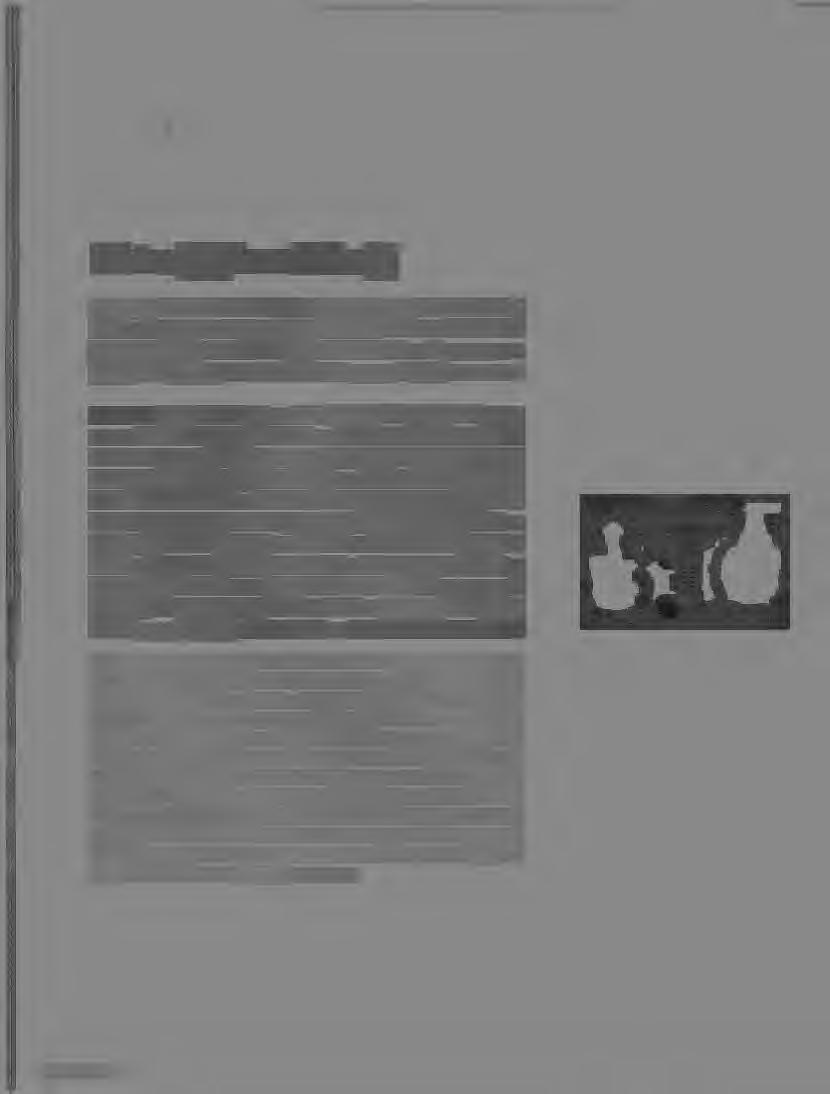
Karina Aguilera Skvirsky
If space-:Junk is the human debris that litters the universe,Junk-space is the residuemanl<Jnd leaves on the planet. The built product of modernization is not modern architecture but Junkspace.junkspoce is what remains o~er modernization hos run its course, or, more precisely,what coagulates while modernization is in progress,its fallout. REM KOOLHAAS
BACKYARDSbrings both the Iraq war home pictorially and explores how gesture crosses cultural and religious divisions. I am interested in both vernacular and constructed approaches of making and taking photographs. In Backyards,I juxtapose found journalistic photographs from the Iraq war with constructed photographs made at the crossroads of a suburban and rural landscape-a landscape that is lush and quintessentially American. By inserting re-imagined gestures within an unmistakably American landscape,new narratives are constructed that position the "other" as subject while becoming absonbed into an American identity. I present my interpretations with their source images culled from the web and newspapers. In presenting both images together; I offer the viewer an opportunity to be brought into the process of enacting a moment of the war KARINAAGUILERASKVIRSKY2007
Karina Aguilera Skvirsky is a photographer and video artist. Her work is often site specific in its inception exploring how photographs (taken or found) can inform and intersect with the geography and history of a place. Using recycled images as vesselsin which new narratives can be implied and investigating how meditated information is understood and perceived, she blurs the boundaries between perceived fact and fiction in her work re-framing imagery within an obvious subjective context. Her work has been exhibited at JessicaMurray Projects. Le Centn, pour L.:imageContemporaine, Smack Mellon, Art in General, the Bronx Museum of Art, Urban Institute of Contemporary Art, SF Camerawork the Houston Center for Photography and other institutions nationally and internationally. She has participated in a variety of residency programs including the Smack Mellon artist in n:sidence program, the Banff Centre for Art in Canada, the Lower Manhattan Cultural Counol, and the Center for Photography at Woodstock Her work is in the collections of El Museo del Barrio, the Center for Photography at Woodstock the Brooklyn Museum of Art and other institutions. She has worked as a curator and is part of the faculty at the International Center for Photography. www.KARINAS.NET
PQ PORTFOLIO 40

Skvirsky, / 495, VA, 2005, C-Print, 28 x 16":(LEFT)http://www.fotos.geschichtsthemen.de/iraq-war/iraq.htm, 2005, 4 x 6"
41 PQ
Karina Aguilera
 KarinaAguilera Skvirsky.Ikea,NJ,2005, C-Prrnts,20 x 25";(LEFD http;//www.fracturednews.com,2005,4 x 6"
KarinaAguilera Skvirsky.Ikea,NJ,2005, C-Prrnts,20 x 25";(LEFD http;//www.fracturednews.com,2005,4 x 6"
PQ 42
KarinaAguilera Skvirsky,Ikea,NJ,2005, C-Prints,20 x 25";(LEFT)httpJ/www.fracturednews.com,2005, 4 x 6"

43 PQ
KarinaAguilera Skvirsky,Lord & Taylor,NJ,2005, C-Print, 16 x 28"; (LEFT) New YorkTimes,2003, 2005, 2 x 6"


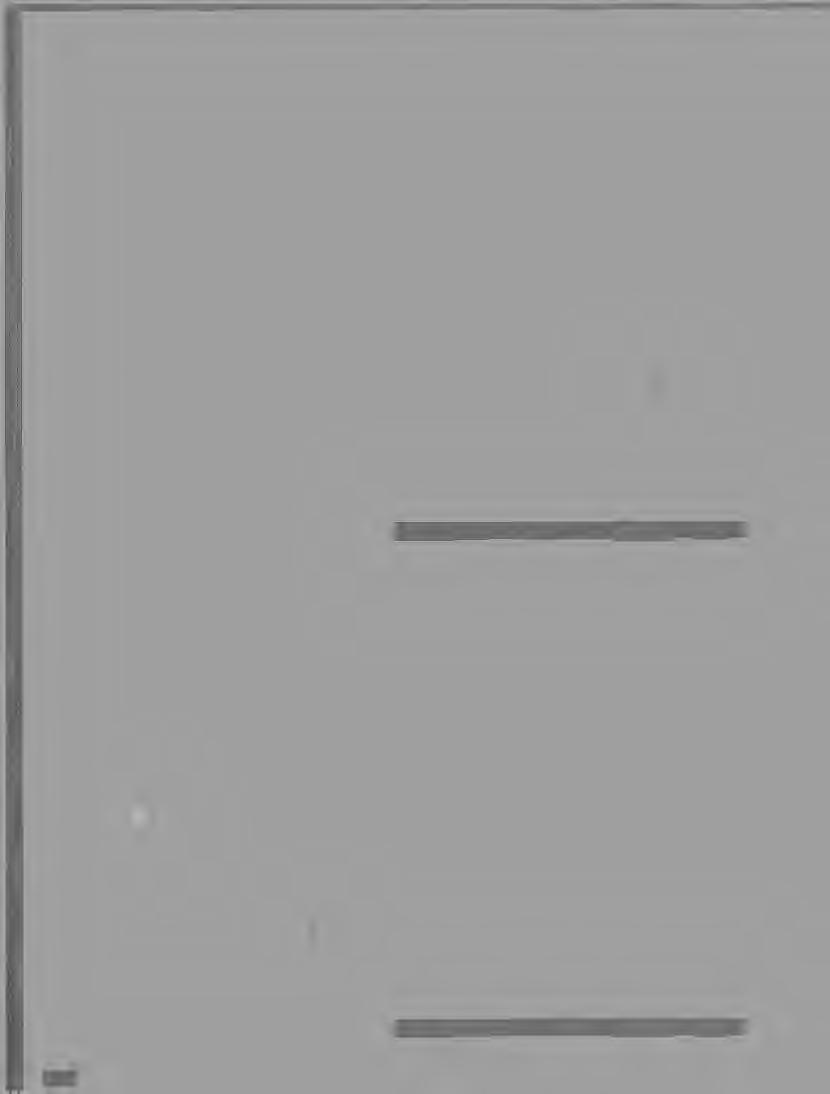 Jean-ChristianBourcart, Untided #21, 2005, C-Print, 16 x 20",courtesyAndrea Mers/rnGallery,NYC
Jean-ChristianBourcart, Untided #21, 2005, C-Print, 16 x 20",courtesyAndrea Mers/rnGallery,NYC
PQ 46
Jean-ChristianBourcart, Untided #25, 2005, C-Print, 16 x 20",courtesyAndrea Meislin Gallery,NYC
Ghosts1nthe Landscape:VietnamReV1S1ted,photographs and text by Craig J.Barber, with an essayby Alison Devine Nordstrom, Umbrage Editions: 2006, hard cover,blackand white photographs.
ALL BOOKS LISTED ARE ADDITIONSTO THECENTERFORPHOTOGRAPHYAT WOODSTOCK'S LIBRARY,WHICH IS OPEN TO THE PUBLIC.WEDNESDAY - SUNDAY 12-5 OR BY APPOINTMENT.
ADAM FUSS, A catalog that accompanies the exhibitions at the Museum of Fine Arts, Boston and Kunsthalle Bielefeld, text by Thomas Kellein.Verlag der Buchhandlung Walther Konig, Cologne; 2002. Donatedby YasukoCooper.
AMERICAN PHOTOGRAPHS: 1900/2000, by JamesDenziger, hard cover, drop spine, Assouline, NYC. DonatedbyYasukoCooper
AMERICAN PHOTOGRAPHY 1890-1965: FROM THE MUSEUM OF MODERN ART NEW YORK, Peter Galassi,essayby Luc Sante,The Museum of Modem Art, NYC; 1995.DonatedbyYasukoCooper
AMERICAN PHOTOGRAPHY:A CENTURY OF IMAGES, Vicki Goldberg and Robert Silberman,Chronicle Books,San Francisco: 1999.DonatedbyYasukoCooper
DAVE ANDERSON: ROUGH BEAUTY, photographs by Dave Anderson with text by Anne Wilkes Tucker, Dewi Lewis Publishing,England:2006.
ANSEL ADAMS: CALIFORNIA, photographs by Ansel Adams with classic California writings, edited by Andrea Stillman, introduction by PageStegner Little, Brown and Company: 1999. DonaredbyYasukoCooper.
ANSEL ADAMS: CLASSIC IMAGES, photographs by Ansel Adams, based on a catalog of an exhibition held at the National Gallery of Art, Washington, D.C. edited by JamesAlinder and John
GHOSTS IN THE LANDSCAPE : VIETNAM REVISITED
Ghosts in the Landscape is a collection of platinum prints that evoke change on contemporary treatment of landscape. Taken with pure reverence for the people and the land in which they live, Barber's photographs bring about a feeling of awe. The slowness of exposure produced by a pinhole camera creates whispers of people, movement within the branches of trees, and the clouds in the sky above adding an aspect of mystery and exploration. Each individual plate consists of two or more points of view, adding duality and a dream-like feeling.
Craig Barber was sent to fight the war in Vietnam when he was I 8 years old. A teenage boy from upstate New York, thrown into a land of war and suffering. Years later; Barber returns to the places where he fought for his life and the lives of his fellow soldiers. The images he produces explores the land, and the emotions connected to it.
The remaining pages of the book allow the reader to follow Craig on his journey, both past and present.This text adds a personal reflection that could not be summed up with the photographs alone. Ultimately, the viewer sees Vietnam not as the war plagued area we tend to assign it, but as a place rich in natural beauty and people.

Szarkowski,Little, Brown and Company: 1990.DonatedbyYasukoCooper
ANSEL ADAMS: OUR NATIONAL PARKS, photographs and selected writings by Ansel Adams, edited by Andrea Stillman and William Turnage, Little, Brown and Company; 1992.Donatedby YasukoCooper
KEITH CARTER: EZEKIEL:SHORSE, photographs by Keith Carter, introduction by John Wood, series editor BillWittliff, University ofTexas Press:Austin, 2000.
KEITH CARTER: OPERA NUDA, photographs and introduction by Keith Carter, Lodima Press:Pennsylvania, 2005. Part of a portfolio book series, this is number four
CRIMESAND SPLENDORS:THE DESERT CANTOS OF RICHARD MISRACH, photographs by Richard M israch, text by Anne Wilkes Tucker,essayby Rebecca Solnit. Museum of Fine Arts, Houston; 1996.DonatedbyYasukoCooper
THE GRAND CANYONANDTHE SOUTHWEST:ANSELADAMS, photography by Ansel Adams, edited by Andrea Stillman, introduction by William Turnage, Little, Brown and SEL ADAMS
Company: 2000. DonatedbyYasukoCoope,
HELMUT NEWTON: POLA WOMAN, photography by Helmut Newton, edited by June Newton, Schirmer/Mosel. Munchen: 2000. DonatedbyYasukoCooper
THE HISTORY OF PHOTOGRAPHY, Beaumont Newhall, edited by Susan Weiley,The Museum of Modern Art, NYC; 1994.DonatedbyYasukoCooper
ICONS OF PHOTOGRAPHY: THE 20THCENTURY, edited by Peter Stepan,PrestalVerlag,Munich: 1999. Donatedby YasukoCooper.
IMOGEN CUNNINGHAM: PHOTOGRAPHS, photography by Imogen Cunningham, introduction by Margery Mann, University ofWashington Press,Seattle: 1970. Donated byYasukoCooper.
MARGARET BOURKE-WHITE: PHOTOGRAPHER, text by Sean Callahan, edited by Maryann Kornely and Debra Cohen, Bulfinch Press,Boston: 1998. Donated byYasukoCooper.
MASTERPIECESOFTHE ].PAUL GETTY MUSEUM: PHOTOGRAPHS, edited by Mollie Holtman.The J.PaulGetty Museum, Los Angeles: 1999.DonatedbyYasukoCooper
THE METROPOLITAN MUSEUM OF ART GUIDE, Works of art selected by Philippe de Montebello, edited by Kathleen Howard.The Metropolitan Museum of Art, NYC; 1987. Dona£edby YasukoCooper.
MOMA HIGHLIGHTS, introduction by Glenn Lowry, edited by Harriet Bee, The Museum of Modern Art, NYC; 1999.Donatedby YasukoCooper.
THE NEW YORK SCHOOL: PHOTOGRAPHS 1936-1963, by Jane Livingston,Stewart,Tabori & Chang; 1992.DonatedbyYasukoCooper.
THE PORTFOLIOS OF ANSEL ADAMS, photographs by Ansel Adams, introduction by John Szarkowski, Little, Brown and Company: 1998. Donated byYasukoCooper.
REINVENTING THE WEST, PHOTOGRAPHS BY ANSEL ADAMS AND ROBERTADAMS, essaysby Allison Kemmerer,John Stilgoe, and Adam Weinberg, Edited by Joseph Newland.Addison Gallery of American Art, Andover; 2002. DonatedbyYasukoCooper
WALKER EVANS & COMPANY, by Peter Galassi,The Museum of Modem Art: 2000. DonatedbyYasukoCooper
WALKER EVANS: PHOTOGRAPHS FOR THE FARM SECURITY ADMINISTRATION 1935-1938, a catalog of photographic prints available from the FanmSecurity Administration Collection in the Library of Congress, Introduction by Jerald C. Maddox, Da Capo Press: 1973. Donatedby YasukoCooper.
PQ NOTED BOOKS 48
JeanieEnright
IN CHARACTER : ACTORS ACTING
"Looking through this book, the reader might find it interesting and challenging to view the photographs before reading the direction, in an attempt to image what the direction might have been." Howard Schatz
Photographer Howard Schatz's latest collection of portraits is a true delight. In Character: Actors Acting suavely balances the dual roles of being a photographer and a director Portraiture embodies not JUStskills of a photographer, but also the response of the subject. Schatz's work demonstrates a brilliant relationship between these two.
Howard Schatz's intrinsic and amusing direction distinguishes his portraits of actors from the usual glamour of celebrity photographs. He begins each exchange by giving a line, such as "You are a tourist on a sightseeing boat in San Francisco Bay... watching a man jump off the Golden Gate Bridge" or " the best and most-hated girl in class basking in parental applause after a solo recital". The subject responds to the dialog by doing what they do best: acting it out Each actor, with their individual history and cultural background, has their own unique response to any scenario. Therefore, Schatz's portraits become a study of body language. Even as a still images, each actor's performance shines. Schatz's use of a wide-angle lens exaggerates already exaggerated expressions. The distorted angle is an entertaining way to study these faces. In Character's black-and-white images allow us to focus on the still emotion. The color portraits featured become an important element, surprising the reader with their sheer life and spontaneity.

AFTERTHE RUINS 1906AND 2006: REPHOTOGRAPHINGTHE SAN FRANCISCO EARTHQUAKEAND FIRE,by Mark Klett with Michael Lundgren, essays by Philip L. Fradkin and Rebecca Solnit. interview by Karin Breuer;Universityof California, 2006.
ANDREAS HORVATH:HEARTLANDSSKETCHESOF RURALAMERICA,photographs by Andreas Horvath, texts by Lech Kowalski, Monika Muskala, and Stefan Sullivan, Fotohof, 2007.
ANN PLOEGER:PORTRAITS,photographs by Ann Ploeger, introduction by Kirsten Rian,William,James & Company, 2007.
ANSELADAMS:400 PHOTOGRAPHS, photographs by Ansel Adams, edited by Andrea Stillman, Little, Brown and Company, 2007.
BA*RA*KEI:ORDEAL BY ROSES: PHOTOGRAPHSOFYUKIO MISHIMA BY EIKOH HOSOE,preface by Yukio Mishima, photographer's note by Eikoh Hosoe, afterword by Mark Holborn, Aperture, I 98S.
CANDIDA HOFER:WEIMAR,photographs by Candida Hofer, texts by Gerda Wendermann and Wulf Kirsten, Schirmer/ Mosel, 2007.
EDUARD SPELTERINI:PHOTOGRAPHSOF A PIONEERBALLOONIST,photographs by Eduard Spelterini, edited by Thomas Kramer and Hilar Stadler, contributuions by Alex Capus, Hubertus von Amelunxen, Stephan Wottreng, and Henry Wydler Scheidegger & Spiess,2007.
ELLIOTTERWITT'SHANDBOOK, photographs by Elliot Erwitt, foreword by Charles Flowers, Quantuck Lane Press, 2003.
FRANK PAULIN:OUT OFTHE LIMELIGHT, photographs by Frank Paulin. introduction by Max Kozloff, Silverstein, 2007.
HOWARD GREENBERGGALLERY:TWENTY FIVEYEARS,photographs selected and annotated by Howard Greenberg, introduction by Howard Greenberg, essay by Lyle Rexer, commentaries by Michael Torosian, Lumiere Press,2007.
LISAM. ROBINSON:SNOWBOUND. photographs by Lisa M. Robinson, text by
In Character: ActorsActing
I l<l\\ard Schatz • Rogcr hbcrc
In Chamcter:ActorsActing, Directed and Photographed by Howard Schatzwith foreward by Roger Ebert, Bulfinch Press,New York/Boston,April 2006, Hardcover 264 pages.
Schatz loosely assembles the book in the language of theatre using words like "Players" in reference to his subjects. "Intermissions" refer to thematic spreads where a singular adjective, such as "Flirtation" are interpreted by a number of players. Chapters are divided by "Acts".
In Character: Actors Acting is a well-designed, thoughtfully sequenced and beautifully compiled book. Schatz's photographs defy the rules of a flattering portrait, yet celebrate an actor's skill and passion. Ste(anieDjie
Mark Strand, Celina Lunsford, and Lisa M. Robinson, Kehrer Verlag Heidelberg, Germany, 2007.
MINE EYESHAVESEEN:BEARINGWITNESS TO THE STRUGGLEFOR CIVIL RIGHTS, photographs by Bob Adelman, essays by Charles Johnson, Life Books, 2007.
OUR TEAM- OUR DREAM:ACUBSFAN'S JOURNEYINTO BASEBALL'SGREATEST ROMANCE,photographs and writing by Tammy Lechner, foreword by Billy Williams.Triumph, 2007.
PHILIPPERKINS:THESADNESSOF MEN, photographs by Philip Perkins, introduction by Max Kozloff, foreword by Alan Klotz, and interview by John Braverman Levine, Ouantuck Lane Press,2008.
REBECCANORRISWEBB:THEGLASS BETWEENUS,photographs and writings by Rebecca Norris Webb, Channel Photographies, 2006.
STILL:COWBOYSATTHESTARTOFTHE TWENTY-FIRSTCENTURY,TINTYPESBY ROBBKENDRICK,essay by Marianne Wiggins, aftenword by Jay Dusard, University ofTexas, 2008.
SUDAN:THE LAND AND THE PEOPLE.PHOTOGRAPHSBYMICHAELFREEMAN.essaysby TimothyCarneyandVictonaButler,foreword by Jimmy Carter Marquand Books, 2005.
TAJFORER:THREEFOLDSUN,photographs by Taj Forer,text by Carol Mavor.Charta 2007. THE BEATLESIN ROME1965,photographs by Marcello Geppetti, Manic D Press,2007.
THE HEREAND NOW:THE PHOTOGRAPHY OF SAMJONES,photographs by Sam Jones, HarperColl,ns, China, 2007.
VISIONSFROMAMERICA:PHOTOGRAPHS FROMTHEWHITNEY MUSEUMOF AMERICAN ART 1940-200I. by Sylvia Wolf, essay by Andy Grundberg, preface by Sondra Gilman Gonzalez-Falla, Prestel, 2002.
WHITETOWERS,by Paul Hirshorn and Steven lzenour MIT Press. 2007.
YOSEMITEIN TIME:ICEAGES,TREECLOCKS, GHOST RIVERS,BY MARK KLETT.Rebecca Solnit, and Byron Wolfe.Trinity University Press.2005.
49 PQ
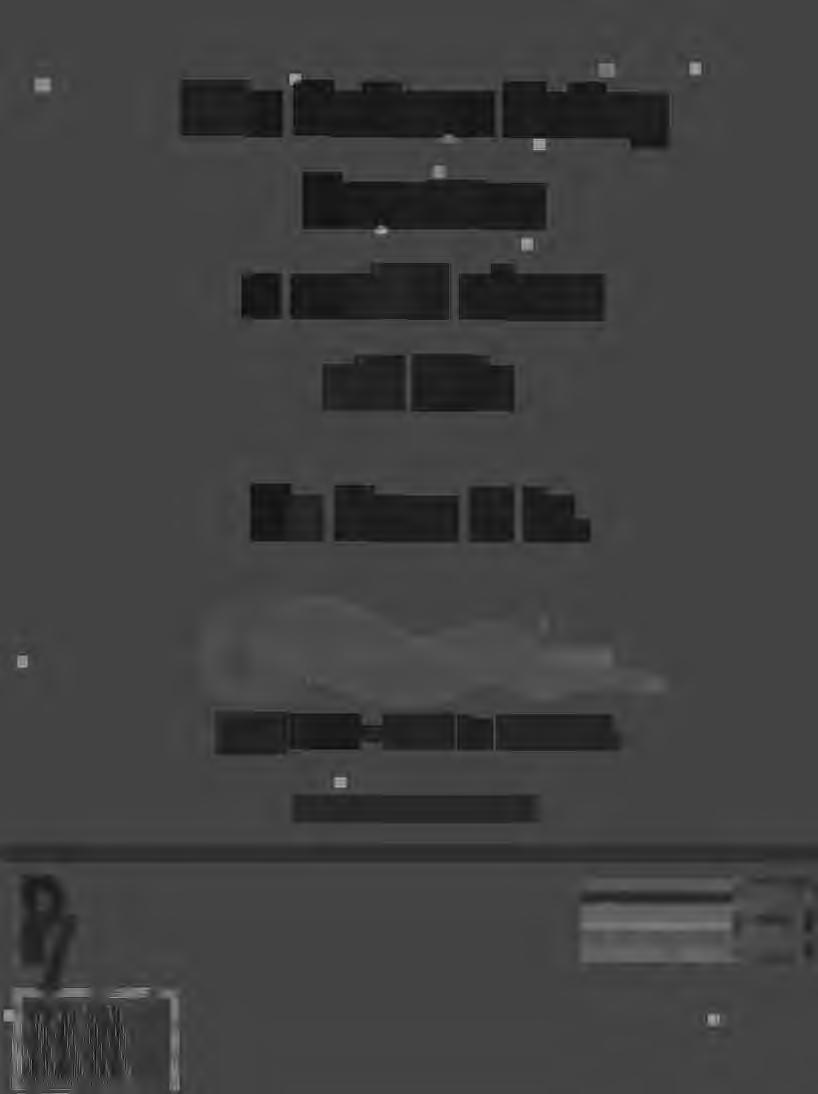
9 6> 7 25274 81205 9 TheHudsonValley deserves a worldclass art fair. So hereit is. May 16th -18th in Beacon. www.sitelinesarHair.com ADDREss coRREcnoN REQUESTED Non-ProfitOrg. PHOTOGRAPHYQUARTERLYU.S.PoS t age CENTER FOR PHOTOGRAPHY AT WOODSTOCK PAID 5 9 TI N KER ST REET AlbanyNY WOODSTOCK NY 12498 Permit# 3?0







































 KarinaAguilera Skvirsky.Ikea,NJ,2005, C-Prrnts,20 x 25";(LEFD http;//www.fracturednews.com,2005,4 x 6"
KarinaAguilera Skvirsky.Ikea,NJ,2005, C-Prrnts,20 x 25";(LEFD http;//www.fracturednews.com,2005,4 x 6"



 Jean-ChristianBourcart, Untided #21, 2005, C-Print, 16 x 20",courtesyAndrea Mers/rnGallery,NYC
Jean-ChristianBourcart, Untided #21, 2005, C-Print, 16 x 20",courtesyAndrea Mers/rnGallery,NYC


